Subject
Ancient Site & Artifacts

The remains of the 1903 Swedish Antarctic Expedition hut led by Otto Nordenskjold, Paulet Island, Antarctica, Polar Regions

Christ from a former crucifix from 1200 from the church of Ufsir in the National Museum, Reykjavík, Iceland

Drinking Horn - Brynjólfur Jónsson of Skarð, National Museum of Iceland, Reykjavík, Iceland

Traditional Icelandic House from the 1800s, National Museum of Iceland, Reykjavík, Iceland

Historic Sailing vessel, National Museum of Iceland, Reykjavík, Iceland

Ruins of stone farm structures in Fossardalur Valley (Valley of Watefalls), near Djupivogur, Iceland

Remains of one of Roman soldiers' encampments used to blockade Masada Citadel (1st century BC to 73), Judean Desert, Israel

Ruins of storage facilities of Masada Citadel(1st century BC to 73), Judean Desert, Israel

Ruins near Herod the Great's Northern Palace within Masada Citadel (1st century BC to 73), Judean Desert, Israel

Ruins of barracks/storage facilities within Masada Citadel (1st century BC to 73), Judean Desert, Israel

Ruins of Masada Fortress (1st century BC to 73), Judean Desert, Israel

Ruins of Masada Fortress (1st century BC to 73), Judean Desert, Israel

Remains of 400 foot high earthen ramp built by Romans to move siege towers up to breach Masada Citadel's walls (1st century BC to 73), Judean Desert, Israel

Ruins of Pottery Storeroom, near where Dead Sea Scrolls were found in caves, Judean Desert, Israel

Mosaic floor at Caesarea Maritima, a seaport on the Mediterranean constructed by Herod the Great in 22 BC, Israel

First and second aqueducts built by Herod to bring fresh water to Caesarea Maritima from 10 miles away, Israel

Ruins at Caesara Maritima (built by King Herod the Great between 22 and 10 BC), Israel

Remains of hippodrome/circus at Caesarea Maritima (built by King Herod the Great between 22 and 10 BC), Israel

Ruins of Roman government offices at Caesarea Maritima (built by King Herod the Great between 22 and 10 BC), Israel

Ruins of government offices (and Roman latrine) at Caesarea Maritima (built by King Herod the Great between 22 and 10 BC), Israel

Ruins at Caesarea Maritima (built by King Herod the Great between 22 and 10 BC), Israel

Remains of Roman mosaic floor iat Caesarea Maritima (built by King Herod the Great between 22 and 10 BC), Israel

Remains of Herod's freshwater aqueducts at Caesarea Maritima (built by King Herod the Great between 22 and 10 BC), Israel

Interior The Chapel of the Milk Grotto, Bethlehem, West Bank

Interior of The Chapel of the Milk Grotto, Bethlehem, West Bank

Interior of The Chapel of the Milk Grotto, Bethlehem, West Bank

The Kfar Bar'am ("White") Synagogue built in the 4th Century on top of an even earlier synagogue, northern shore of Sea of Galilee

Capitol of column with carving of menorah, at site of Kfar Bar'am ("White") Synagogue, Northern Shore, Sea of Galilee

Capitol of column with carving of Jewish star, at site of Kfar Bar'am ("White") Synagogue, Northern Shore, Sea of Galilee

20th Century Franciscan Church of St Peter, incorporating part of 4th century church, commemorating site where it is believed Jesus multiplied loaves and fishes to feed the masses, shore of the Sea of Galilee

Scale model of Old City of Jerusalem at end of Second Temple period, Israel Museum, Jerusaelm, Israel

Human shaped coffins fro Egypt, 13th Century BC, Israel Museum, Jeruslem

Bronze Statue of Emperior Hadrian, circa 2nd century, Israel Museum, Jerusalem

Roman theater, with capacity for 6,000 spectators, circa 2nd century , opposite the Roman Citadel in Amman, Jordan

Fingers of former statue (40 feet tall) of Hercules are in front of columns remaining from 2nd century Roman temple, within Amman Citadel, Jordan

Rare two-headed, large scale, human bust, circa 6500 BC, made of lime plaster and bitumen, found near Amman and displayed in Jordan Archeological Museum on Amman Citadel, Jordan

Ruins of Roman Temple of Hercules (2nd century) on Roman Citadel in Amman, Jordan; originally with six 33 foot columns, larger than any temple in Rome

2nd century Roman sarcophagus with carved reliefs, within Amman Citadel, Jordan

Remnants of Roman Temple of Hercules (2nd century) in foreground with Umayyad Palace (8th century blend of Byzantine, Islamic and other architectural styles) and minaret of mosque in rear; Amman Citadel, Jordan

Remains of 2nd century Roman nymphaeum (fountain with large pool), Amman Jordan

Oval Forum (plaza) in front of Temple of Artemis (on hill), part of Roman ruins from 1st century BC to 3rd century in Jerash, Jordan; perhaps largest, best preserved site of Roman architecture outside Italy

Roman food market ("marcellum") from 2nd century; it had stalls for merchants within large niches of walls, along the Cardo (main street); part of Roman ruins in Jerash, Jordan; perhaps largest, best preserved site of Roman architecture outside Italy

Entrance to Temple of Artemis (2nd century), part of Roman ruins in Jerash, Jordan; perhaps largest, best preserved site of Roman architecture outside Italy

Ampitheater (2nd century Roman) used for performances and council meetings in Jerash, Jordan; perhaps largest, best preserved site of Roman architecture outside Italy

Arch honoring Emperor Hadrian's visit to Jerash in 129-130; Jordan; perhaps largest, best preserved site of Roman architecture outside Italy

Inscription in Greek carved into stone, possibly a dedication for a building, Jerash, Amman; perhaps largest, best preserved site of Roman architecture outside Italy

The Cardo Maximus, collonaded main street of Jerash, Jordan; perhaps largest, best preserved site of Roman architecture outside Italy

Temple alongside Cardo Maximus, main street of Jerash, Jordan; perhaps largest, best preserved site of Roman architecture outside Italy

Gateway of collonaded street to Roman theater in northern section of Jerash; best preserved site of Roman architecture outside Italy

Temple of Artemis (2nd century), part of Roman ruins in Jerash, Jordan; perhaps largest, best preserved site of Roman architecture outside Italy

Oval Forum (plaza) and Cardo Maximus (main street); part of Roman ruins from 1st century BC to 3rd century in Jerash, Jordan; perhaps largest, best preserved site of Roman architecture outside Italy

Ruins of Hippodrome (2nd century stadium) in Jerash, Jordan; perhaps largest, best preserved site of Roman architecture outside Italy

Stairs into interior of Ajloun Castle, 12th century fortress used to control bedouins and to defend Muslims against Crusader attacks, Northwestern Jordan

Large chamber in Ajloun Castle, 12th century fortress used to control bedouins and to defend Muslims against Crusader attacks, Northwestern Jordan

Arrow slit used to defend Ajloun Castle, 12th century fortress used to control bedouins and to defend Muslims against Crusader attacks, Northwestern Jordan

Initial gate (there were two others) to Ajloun Castle, 12th century fortress used to control bedouins and to defend Muslims against Crusader attacks, Northwestern Jordan

From Jabal Auf (hilltop), Aljoun Castle guarded three wades and provided panoramic views; 12th century fortress used to control bedouins and to defend Muslims against Crusader attacks, Northwestern Jordan

Part of Madaba Mosaic Map (6th century floor of St. George's Church), oldest existing depiction of the Holy Land and neighboring territories, Madaba, Jordan

Part of Madaba Mosaic Map (6th century floor of St. George's Church), oldest existing depiction of the Holy Land and neighboring territories, Madaba, Jordan

Cistern ( circa 100 BC - 1st century; it held 3 million gallons), one of about 200, carved into rock by Nabataens as part of elaborate system of reservoirs, channels, etc. to supply water in the desert to people in Litle Petra and Petra, Jordan

Nabatean structure, possibly used to produce wine or process water, near Little Petra, Jordan

Facade of tomb or building cut into sandstone cliffs by Nabataeans, Little Petra, Jordan

Nabataeans used narrow canyon to create protective entrance to Little Petra, Jordan

Entrance to tomb, dwelling or other building cut into sandstone cliffs by Nabataeans, Little Petra, Jordan

Entrance to tomb, dwelling or other building cut into sandstone cliffs by Nabataeans, Little Petra, Jordan

Long curving stairway leading to tomb, dwelling or other building cut into sandstone cliffs by Nabataeans, Little Petra, Jordan

Ruins of Wu’ayra Castle, built by crusaders circa 1116 on top of remains of a Nabataean or Roman predecessor

Bronze Roman statue, Petra Museum, Petra, Jordan

Carved stone sculptures, including torso of Apollo, and architectural fragments from Nebataeans, Greeks and Romans, Petra Museum, Petra, Jordan

Multi-strand necklace with over 2,580 beads of turquoise and other stones and a mother-of-pearl divider from about 7500-6800 BC that was worn by an 8 to 10-year-old girl. Petra Museum, Petra, Jordan.

Anatolian marble vase with lioness handles from the Roman Period (170-210 AD), Petra Museum, Petra, Jordan

Siq gorge, part of Wadi Musa, is path to main entrance to city of Petra; it narrows to as little as 10' and its walls are hundreds of feet tall, Jordan

The "Treasury", cut out of sandstone by Nabataeans, was a mausoleum and crypt and got its modern name from Bedouins who thought it contained treasures, Petra, Jordan
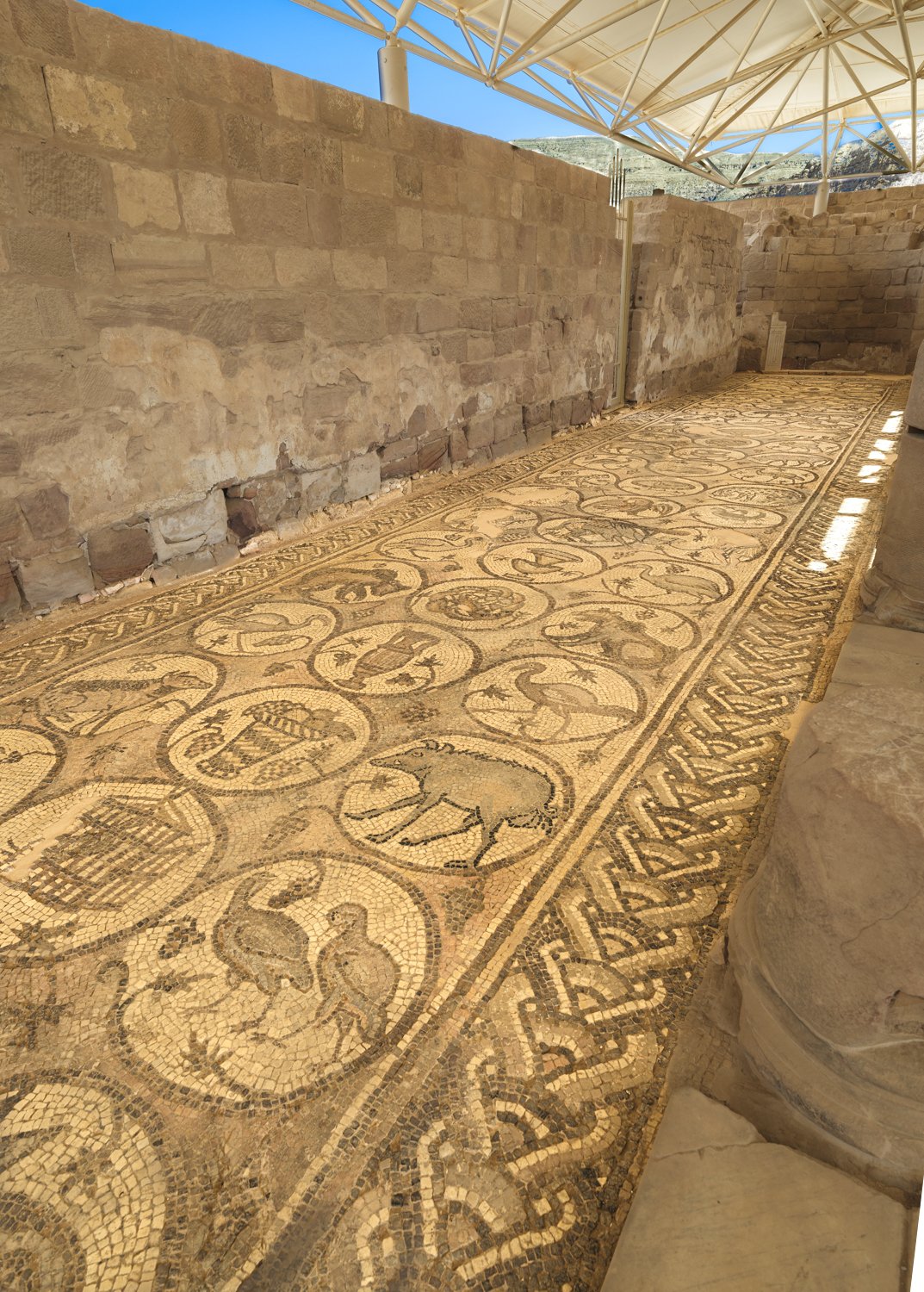
5th century mosaic floors of Byzantine Church, Petra, Jordan

Tombs, temples, public bildings carved into sandstone by Nebataeans, in Siq gorge, part of Wadi Musa, which is path to main entrance to city of Petra, Jordan.

First century BC tomb, topped with four obelisks and standing over a chamber used for ritual feasts, has Egyptian, Nebataean, etc. architectural styles, Petra, Jordan

Colonnaded Street, a carriageway, built by Romans (circa 100), once lined with shops and public buildings, Petra, Jordan

First century Nebataean ampitheater (held 4,000 to more than 8,000 spectators) carved into sandstone, Petra, Jordan

3 story Palace Tomb, 1st century BC, Petra, Jordan

Pre-historic polygraph carvings of camels, horses, humans and other thing figures on stone cliffs, Wadi Rum, Jordan

Pre-historic polygraph carvings of camels, horses, humans and other things on stone cliffs, Wadi Rum, Jordan

Intact, signed (three artists) and dated (530) floor mosaic known as the Diakonikon Mosaic, in church on Mt.Nebo, Jordan. Shows hunting and pastoral scenes with various animals

Huaca Pucllana, pre-Inca (200 – 700) clay and adobe stepped pyramid Lima, Peru

Double spout bottles, used in rituals and as funerary offerings, and other Nazca ceramics (circa 1-800), Larco Museum, Lima Peru

A child's body, perhaps Incan (8th to 13th century) wrapped in cloth and covered with a metal funerary mask, pepared for journey into underworld, Larcos Museum, Lima, Peru

Human skulls, perhaps as old as 4000 BC, with prominent hole in the back and a tool used by Incan healers/priests to make such holes to relieve pressure from subdural hematomas. Scientists think that only one of the two operations was successful.

Pre-Columbian Era (8000 BC to 1532) gold ceremonial headware or masks, Larcos Museum, Lima, Peru

Funerary attire of high ranking person from Chimu empire (12th to 15th century), Larcos Museum, Lima, Peru

Moche (1st through 8th centuries) ceramic vessels with spouts and figures engaged in sexual activities, Erotic Gallery of Larcos Museum, Lima, Peru

Walls made of massive stones (up to 125 tons) of Sacsayhuaman, 15th century Incan fortress on hill overlooking Cusco, Peru

Sacsayhuaman, 15th century Incan fortress on hill overlooking Cusco, Peru

15th century Urban and Agricultural sectors of Incan citadel of Machu Picchu, Peru

Agricultural area and adjacent stone buildings, citadel of Machu Picchu (15th Century), Peru

Terraces built by Incas for agriculture (corn, potatoes, quinoa, coca leaf) as well as to manage water supplies, prevent erosion and stabilize against landslides; Machu Picchu (15th century), Peru

Temple of the Sun, central to Incan religoius activities, Machu Picchu (15th Century), Peru

One of many Incan made canals to carry water from springs to irragation systems for agriculture and to fountains in Machu Picchu (15th Century), Peru

Royal Tomb, under Temple of Sun, with intricate stonework, was site for Incan ceremonies, Machu Picchu (15th century), Peru

Wall showing two styles of Incan masonary: polygonal (irregularly shaped stones fitted using dirt/mortar and used for terraces, etc.) and Ashlar (finely cut recxtangular blocks precisely fitted without mortar); Machu Pichu (15th century), Peru

"Water Mirrors" that may have been used for ritualistic and astronomical purposes (e.g., observing reflections of planets, stars), Machu Pichu (15th century), Peru

Church of Nativity, one of oldest continuously operating churches in the world (since 400), Bethlehelm

Grotto where Jesus is believed to have been born, under the Church of the Nativity, Bethlehelm

12th Century wall mosics created by Crusaders in Church of Nativity, one of oldest continuously operating churches in the world (since 400), Bethlehelm

Dome of the Prophet on the Temple Mount; the original was built between 661 and 750 and destroyed by Crusaders; it was rebuilt in 1539; Jerusalem

Chain gate minaret (circa 1329), one of the four minarets of the Al-Aqsa Mosque compound, Jerusalem

Small section of Roman road 26 feet wide lined with stone curbs and Corinthian columns discovered during excvations for housing in 1969. The road once connected Roman Jerusalem with Jaffa, 50 miles to the west.

Zion Gate (circa 1540) leads from Mount Zion to Jewish and Armenian quarters of Old Jerusalem; Gate has bullet holes from 1948 Israeli War of Independence

15th Century monaret for 12th century Mosque of Omar, located opposite courtyard of Church of Holy Sepulchre, Old Jerusalem

Tower of David, near Old Jaffe Gate entrance to Old Jerusaelm; parts of the Tower go back 2,000 years

Corinthian and Byzantine columns and capitals, potentially dating back to Romans (117-139) or earlier time of King Herod, in Church of Holy Sepulchre (a 4th century structure built on remains of Roman Temple and rebuilt in 1048; sits over site of Jesus' burial), Old Jerusalem

Dome of the Rock, 7th century Islamic shrine commemorating Mohammed's ascent into heaven for Muslims and for Jewish people the place where Solomon's Temple once stood; located on Temple Mount, Old Jerusalem

Mosaic ceiling of 7th century Dome of the Chain (Muslims say a chain once rose to heaven from this location), Temple Mount, Old Jerusalem

Western Wall (right); what remains of wall that surrounded Temple Mount, the site of Solomon's Temple (completed 957 BC and destroyed 586 BC by King Nebuchadnezzar of Babylon) and then site of the Second Temple (circa 516 BC, possibly 350 BC); separate Jewish prayer areas for men and women are in front of the Wall, Old Jerusalem

Damascus Gate (1537), a primary entrance to Old Jerusalem built on site of 2nd century Roman gate built by Emperior Hadrian

A room in the apartment of the Queen Mother in the Harem section of the Topkapi Palace (construction oif palace began in 1459 and Harem area was added beginning in 16th century), Istanbul, Turkey
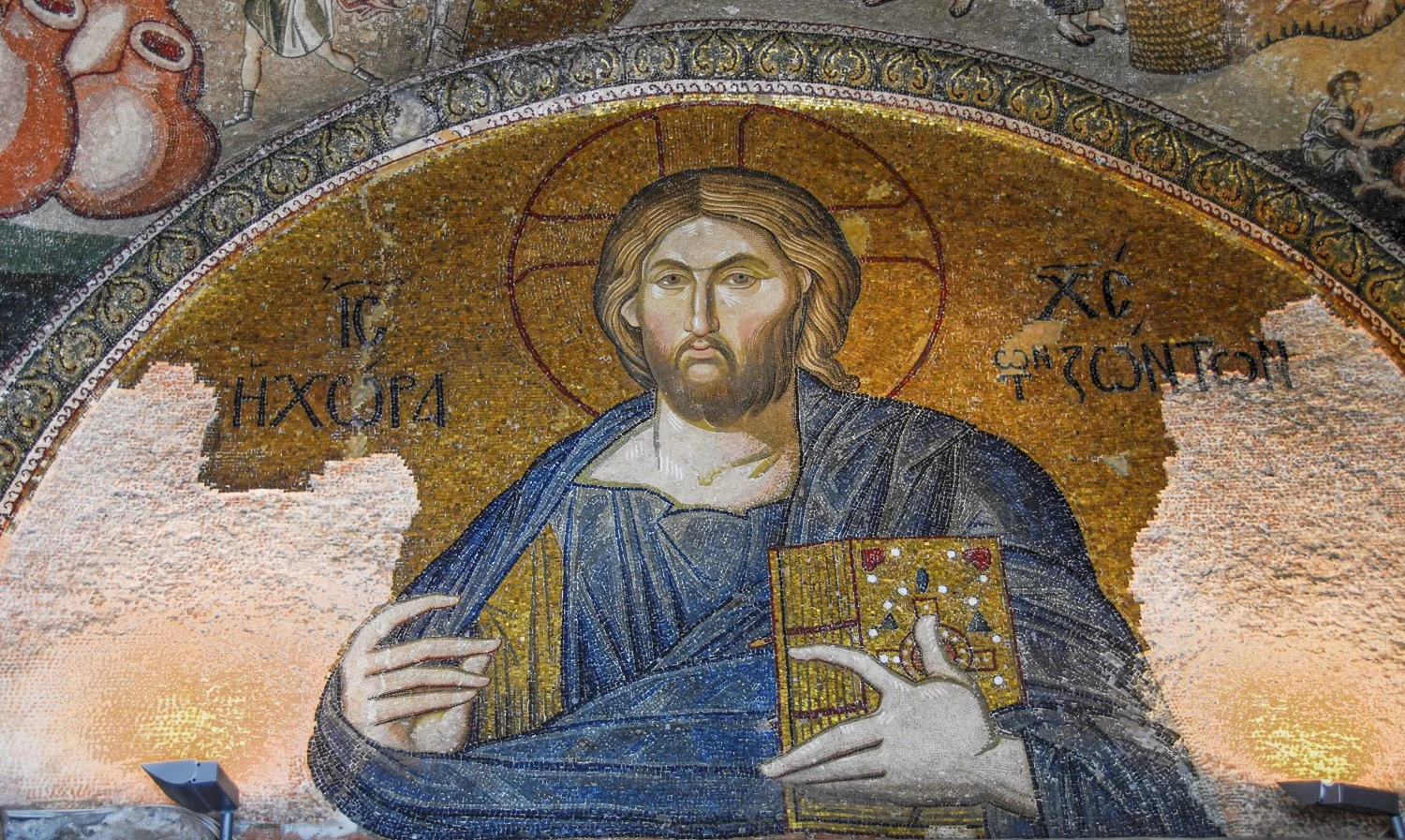
A Byzantine mosaic of "Christ All-Ruler" in the Chora Church, part of which was built in 4th century; building was first converted into a mosque by Ottomans in 16th Century (Kariye Mosque), Istanbul, Turkey

Hagia Sophia, completed in 537 on top of the site of two prior structures, was a church and then became a mosque after 1453 when Constantinople fell to the Ottomans, Istanbul, Turkey

Hojo Garden, a Zen-Buddhist rock garden created between 1624-1644, at Nanzen-ji Temple, Kyoto, Japan
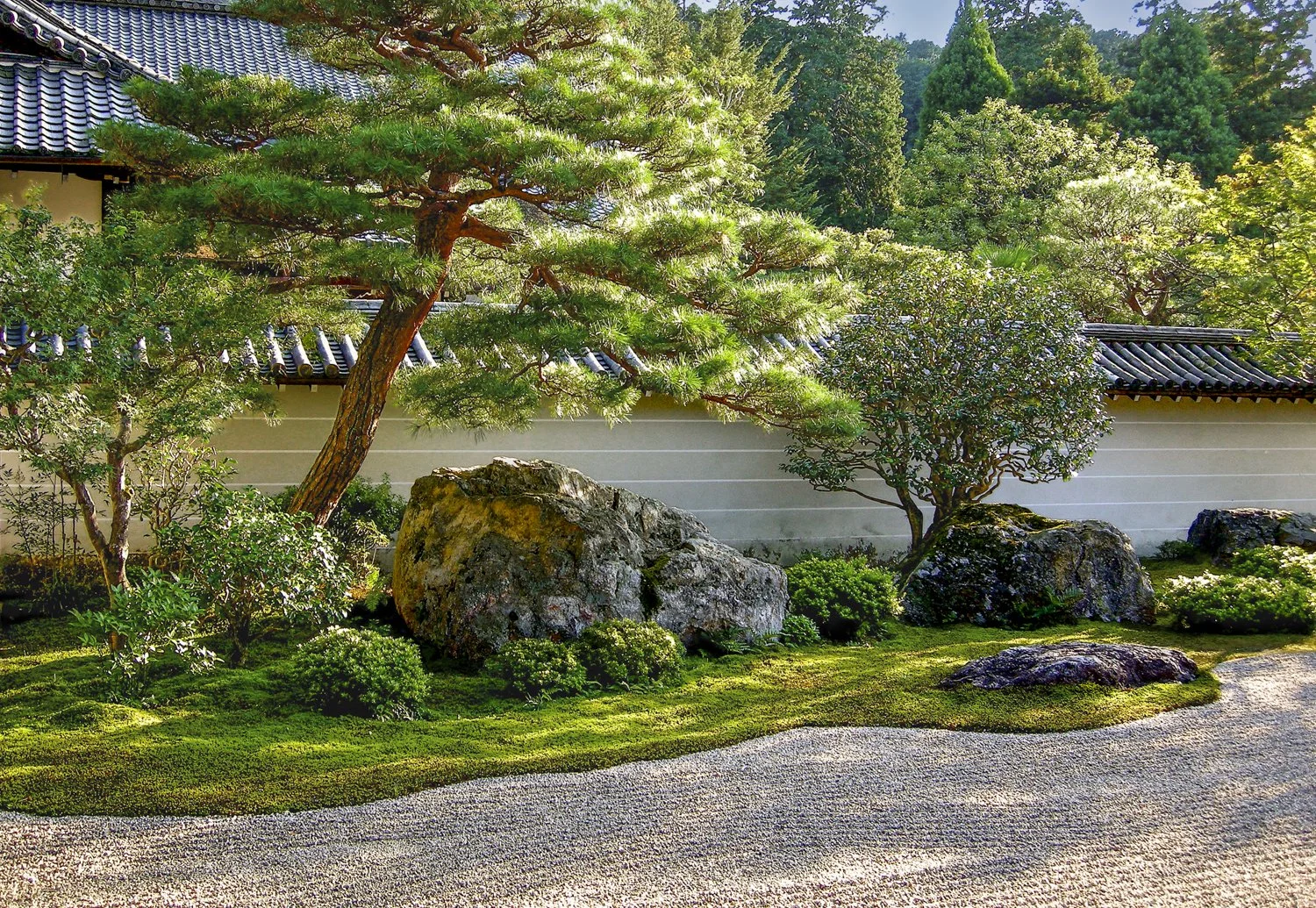
"Leaping Tiger Garden" created around 1600, at Nanzen-ji Temple, Kyoto, Japan
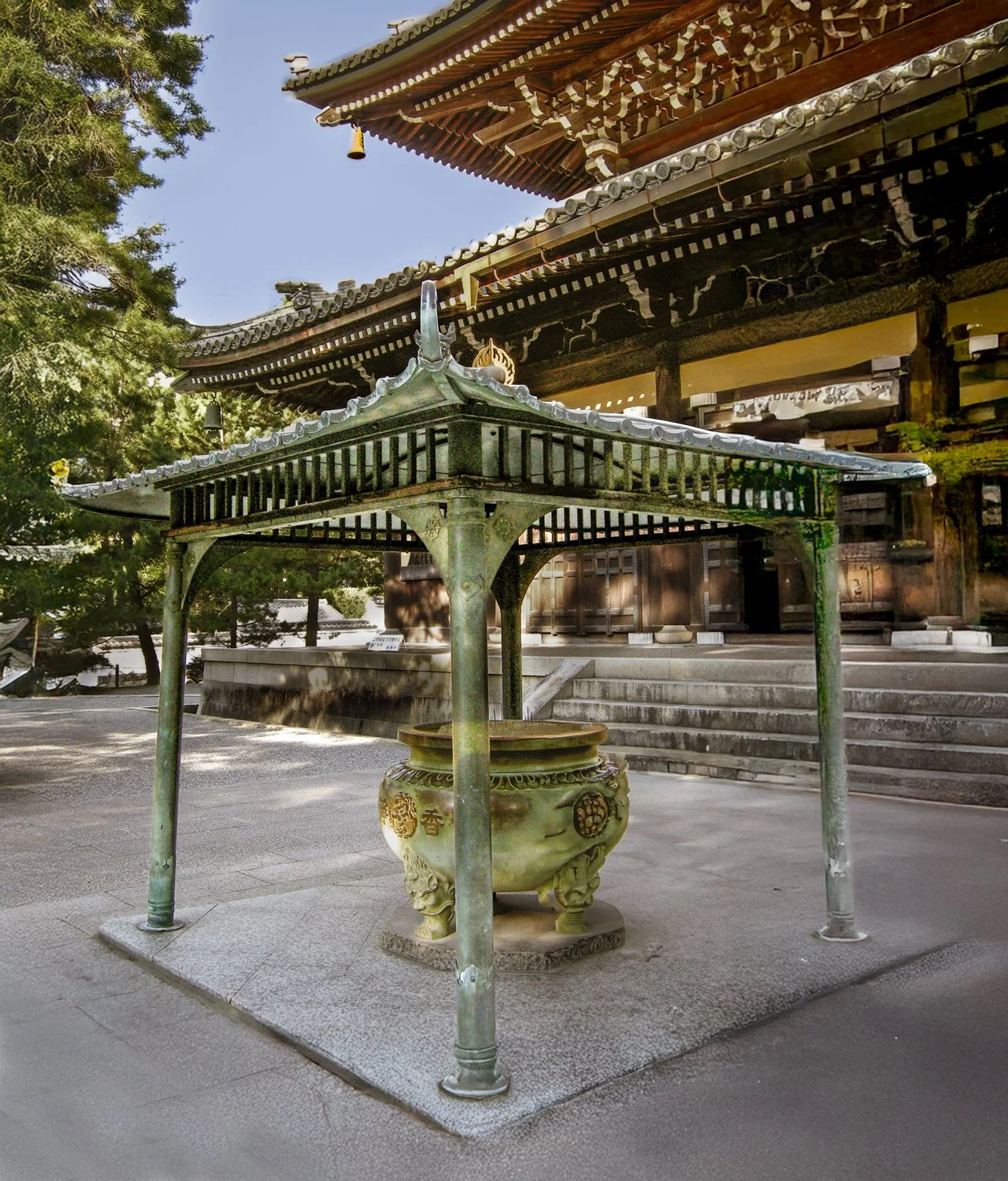
A bronze basin used for incense burning as part of a ritual purification before entering the Nanzen-ji Temple behind it, Kyoto, Japan
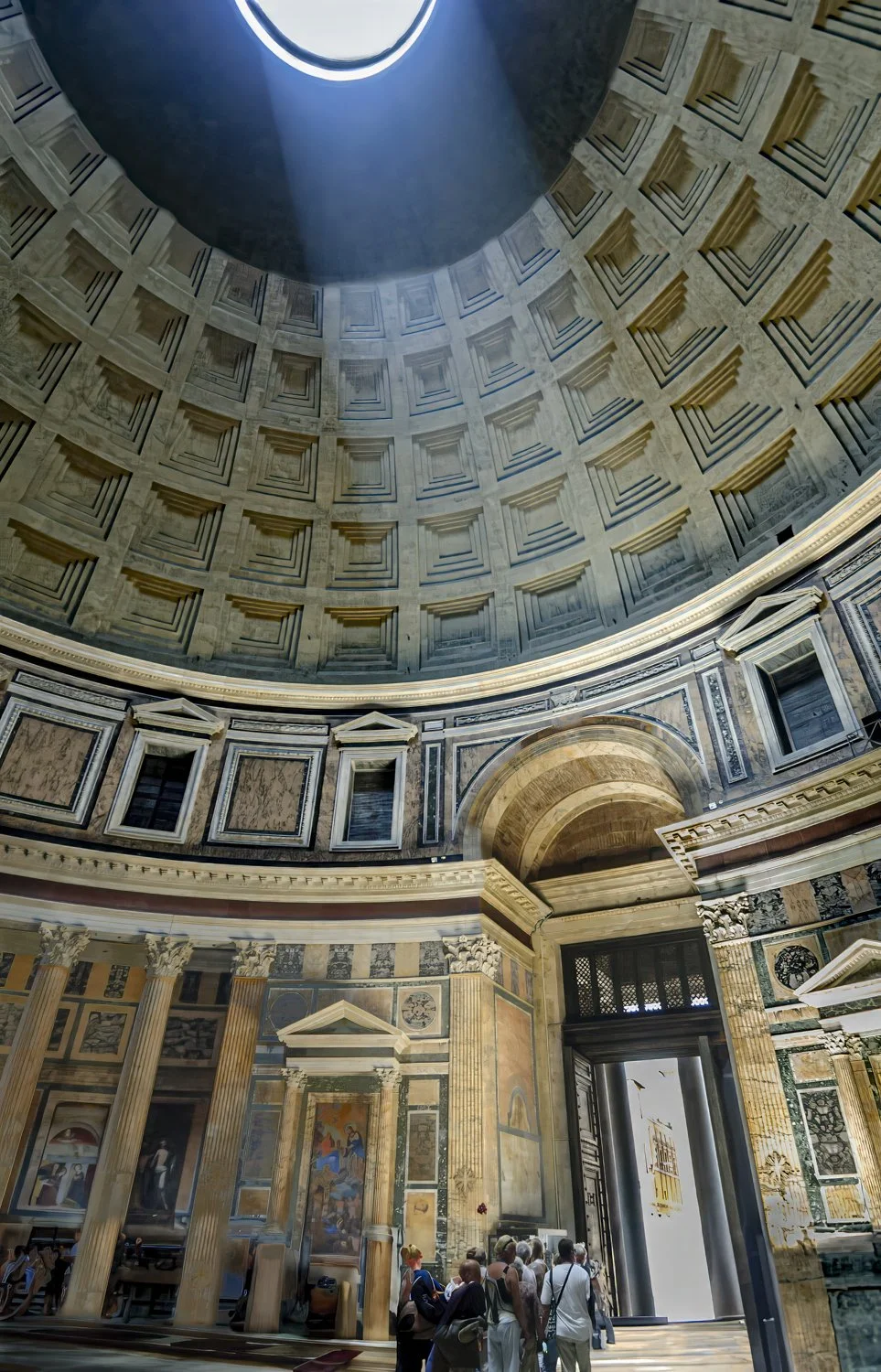
Interior of the Pantheon showing dome and open oculus, which spiritually connected people with the divine in the heavens, lets in light and acts as a sundial; first built in 27 BC as a temple to the Roman gods and then rebuilt (118-125) into its current form by Emperor Hadrien; Rome, Italy

A few replicas of the original 9-12 marble lions on the Terrace of the Lions, dedicated to Apollo around 600 BC, Island of Delos, Greece (a few original statue are somewhat intact and are in a museum in Delos)
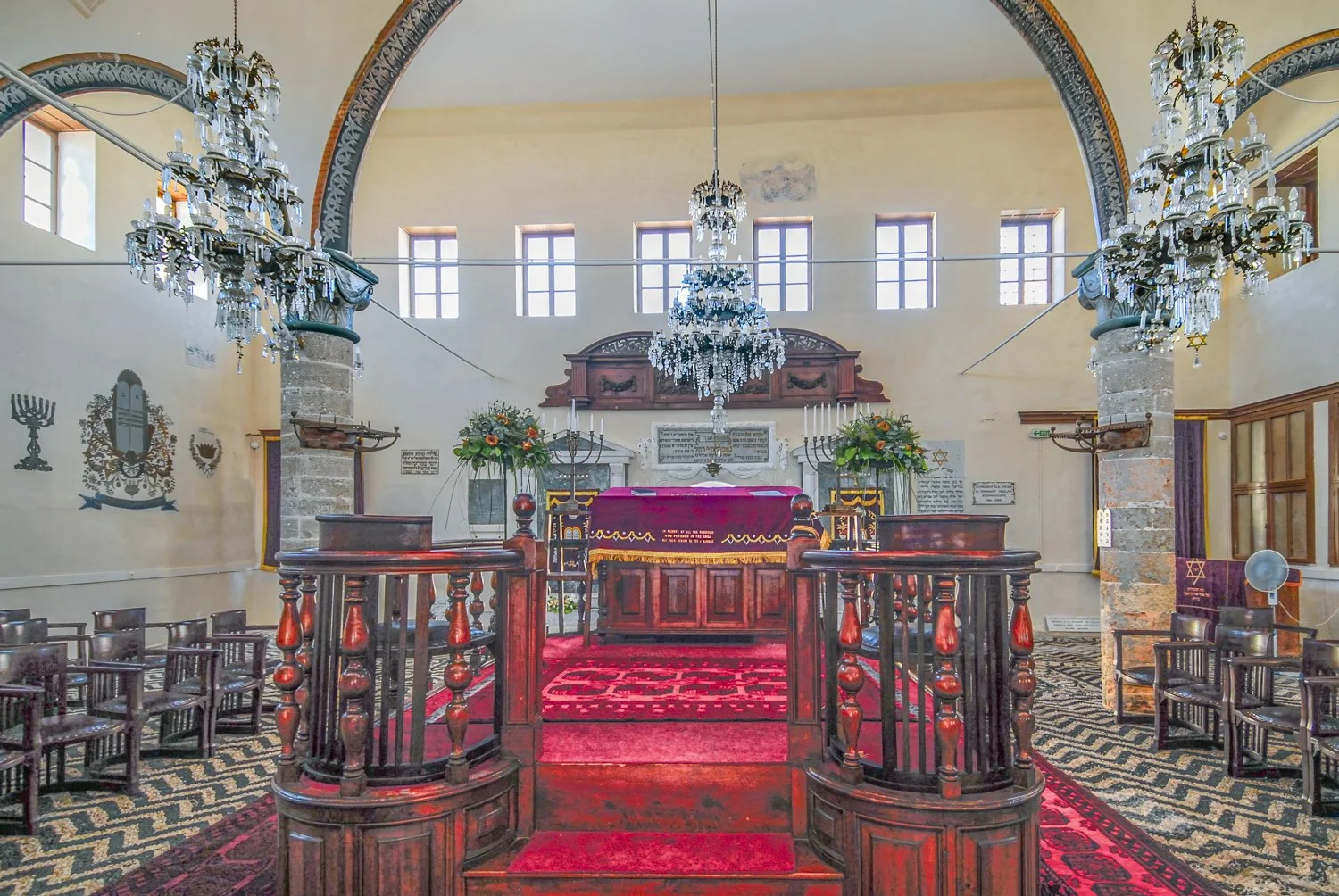
Kahal Shalom Synagoge, built in 1577 and still in use, in Rhodes, Greece
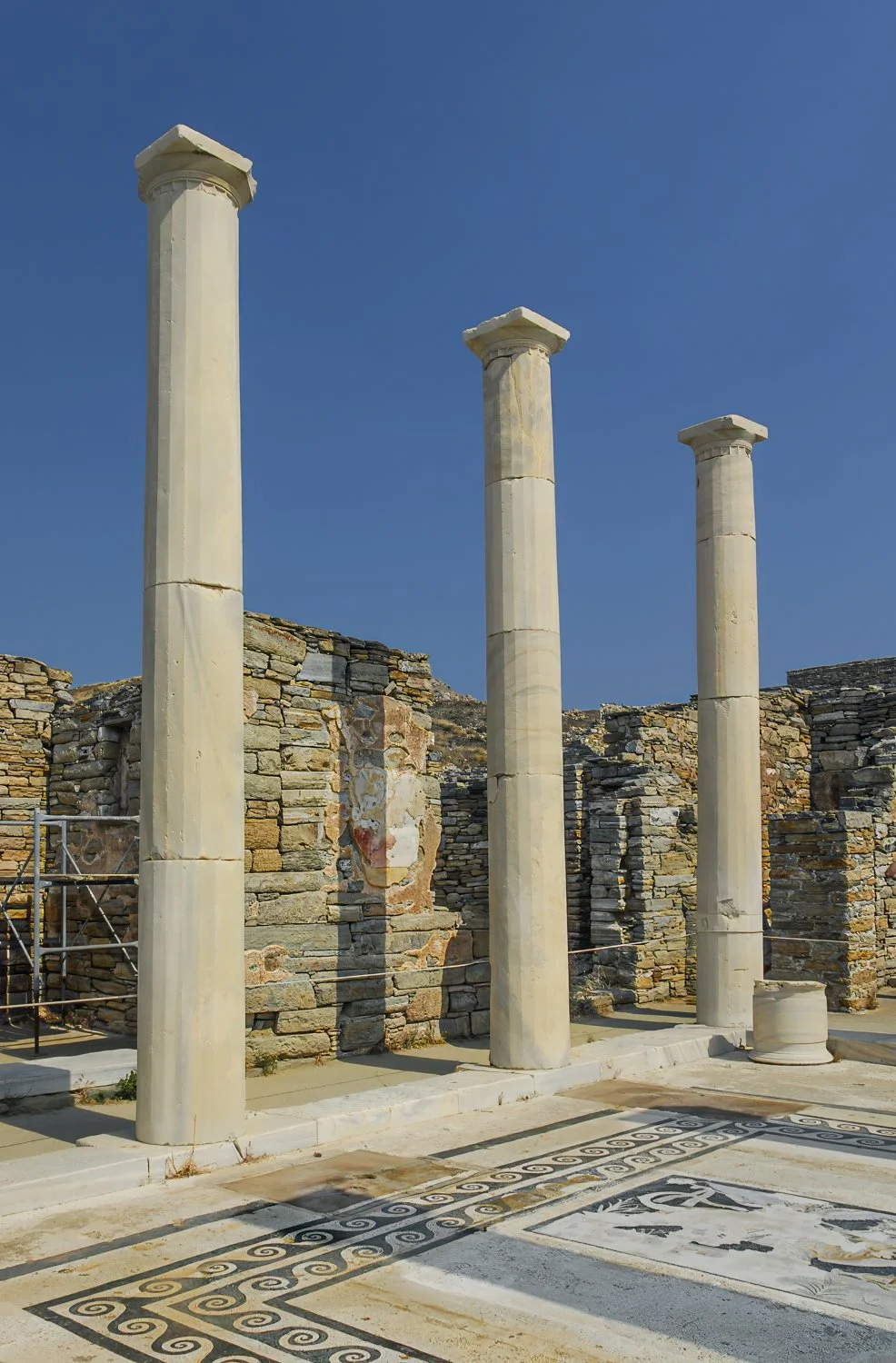
Mosaics, including one of Dionysus riding a tiger, and coklumns at ruins of House of Dionysus, constructed 2nd century BC, on the Island of Delos, Greece, which was an important religous and commercial center

Commercial Agora (central marketplace), a public space built by Greeks in 3rd century with shops and also used for court proceedings, gladiator contests, etc., Ephesus, Turkey. The Romans later built the Library of Celsus seen on the left.
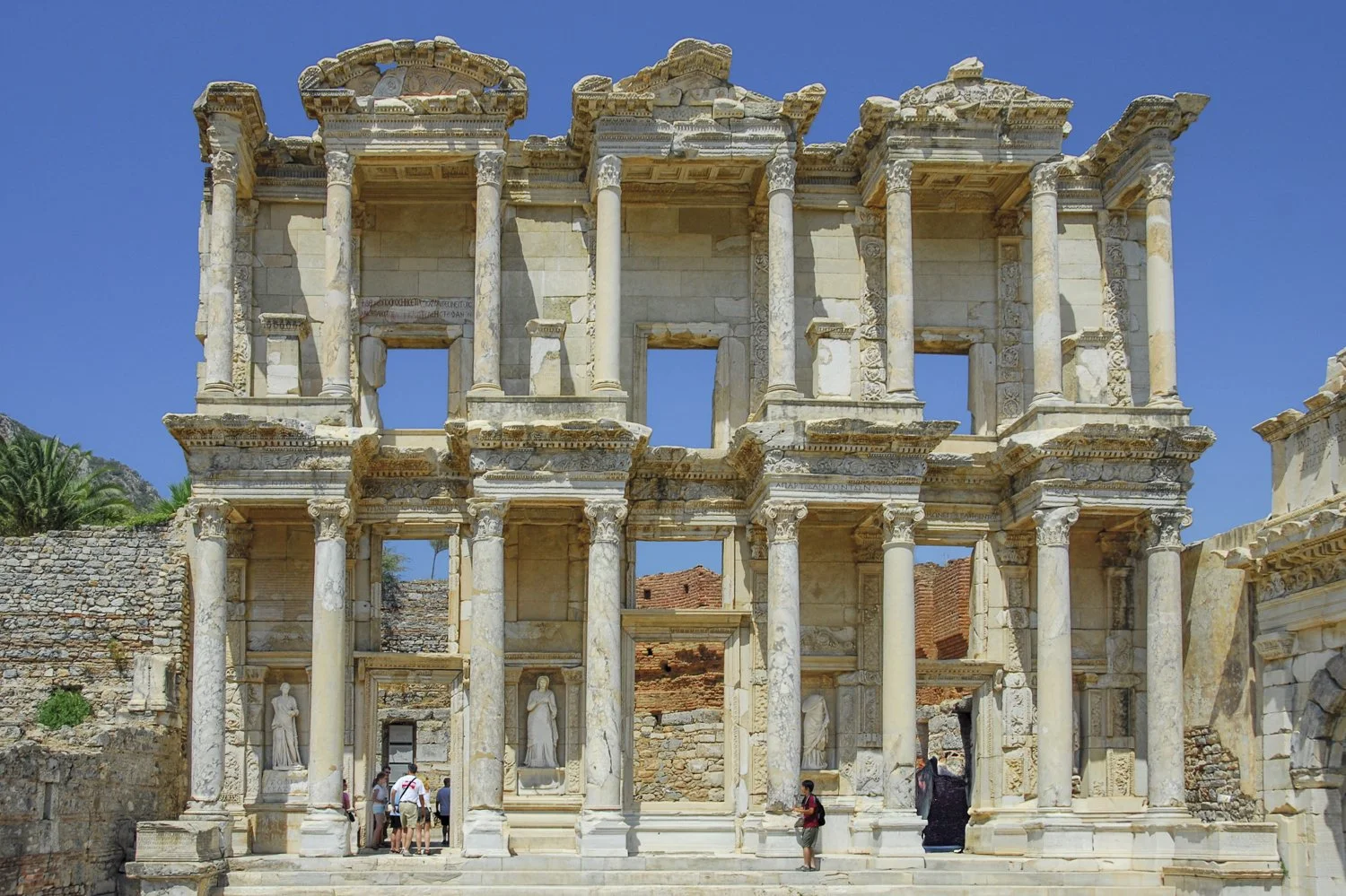
Library of Celsus, completed around 135 as a tomb for a Roman senator and as a library that in time housed almost 12,000 scrolls, Ephesus, Turkey. Three statues of virtues, such as wisdom, are in niches (replicas, originals are in Vienna's Ephesus Museum)
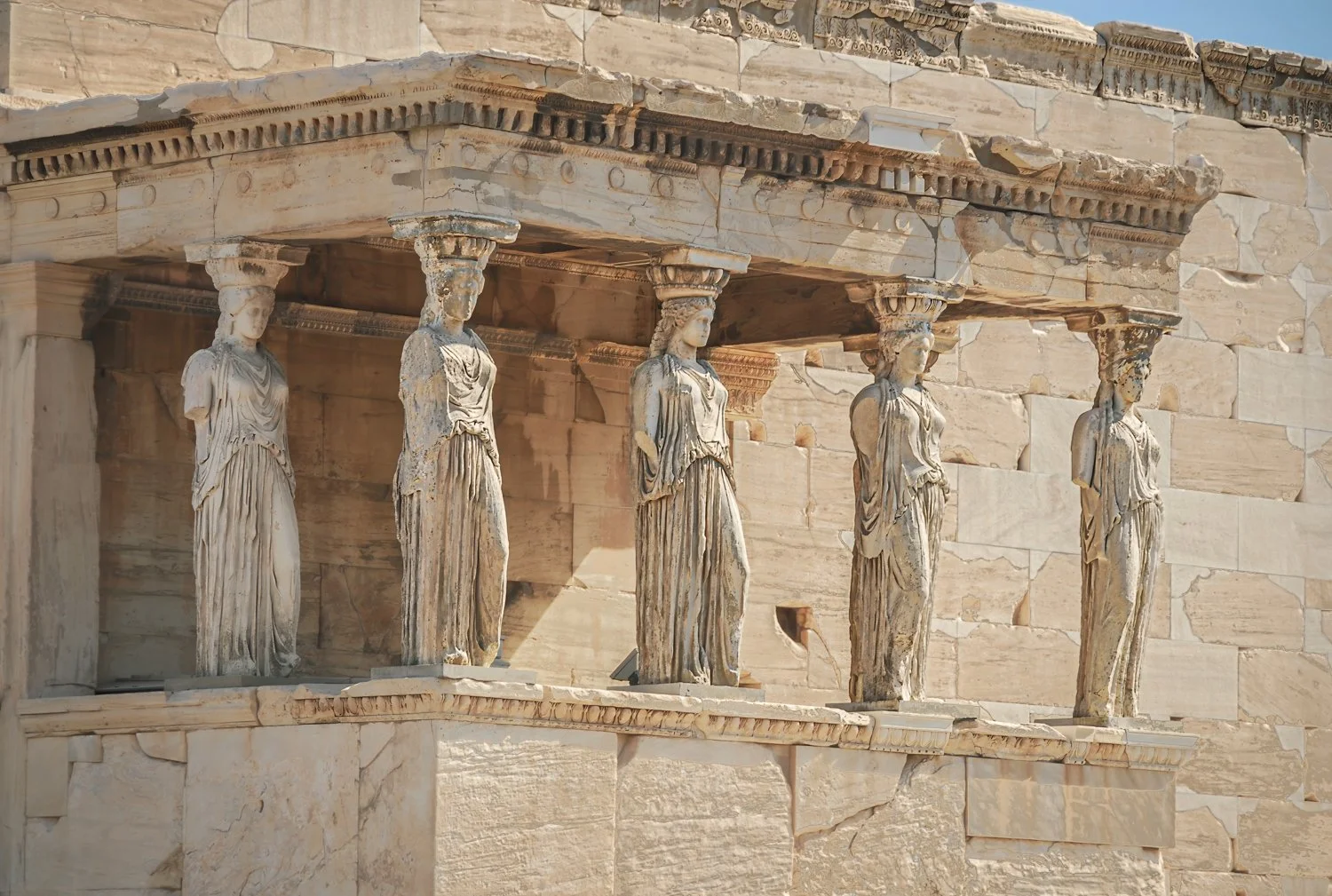
Porch of the Maidens, with statues of five maidens (replicas; five originals are in Acropolis Museum and one in the British Museum), providing support for the structure above the columns; part of Erechtheion, a Greek temple on the Acropolis, Athens, Greece

A public fountain with mosaics (Roman) preserved by eruption of Mount Vesuvius in 79, House of the Small Fountain, Pompeii, Italy

Stairway up Mount Cynthus and to where the Sanctuary of Zeus and Athena was in ancient Delos (likely during 900-100 BC), Island of Delos, Greece
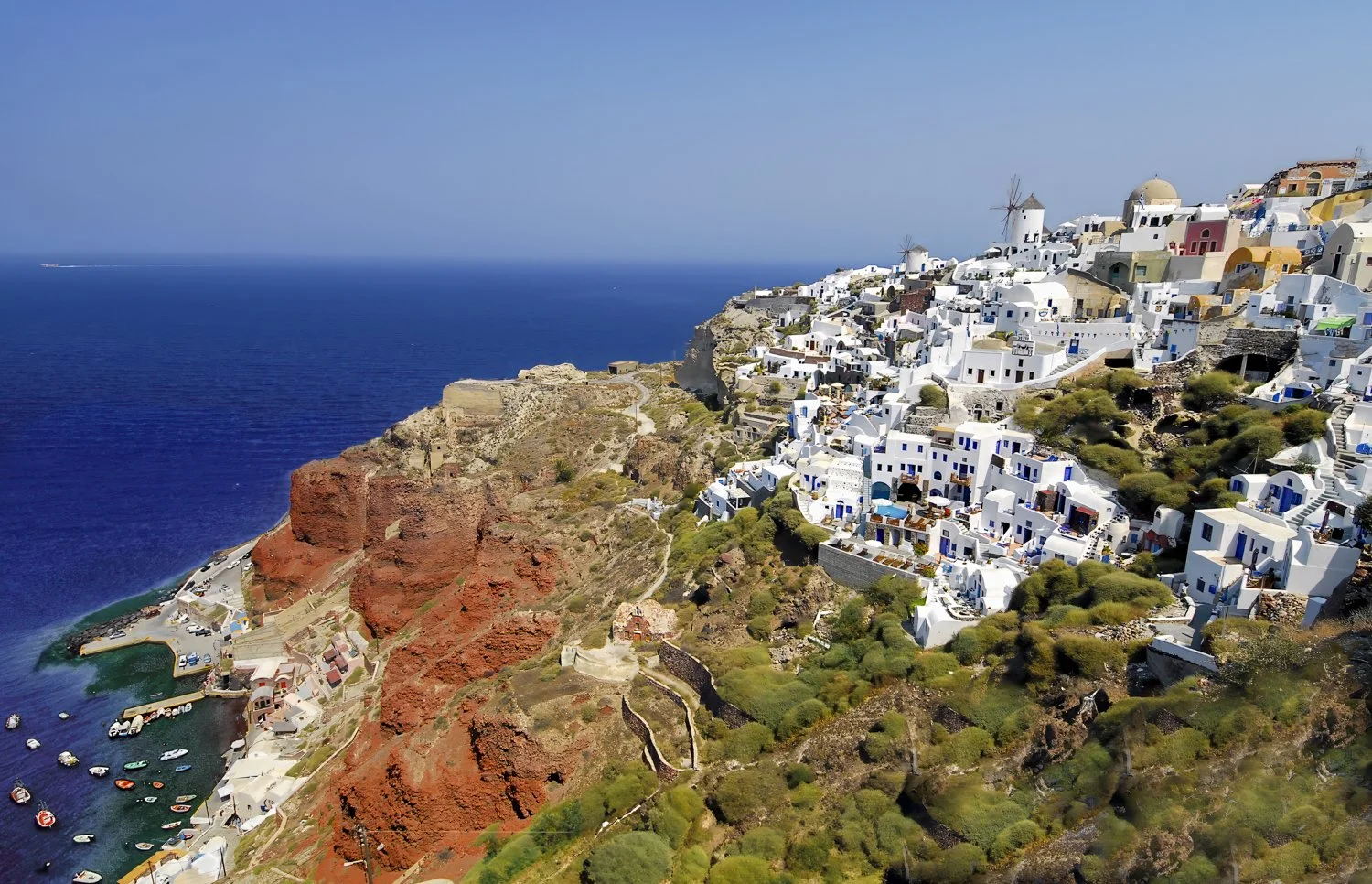
The ancient village of Oia, on the volcanic slopes of the island of Santorini leading down to the Aegan Sea; there are signs humans inhabited the island back to 4000 BC; it has been ruled by Minoans, Phoenicians, and Venetians, among others; Greece
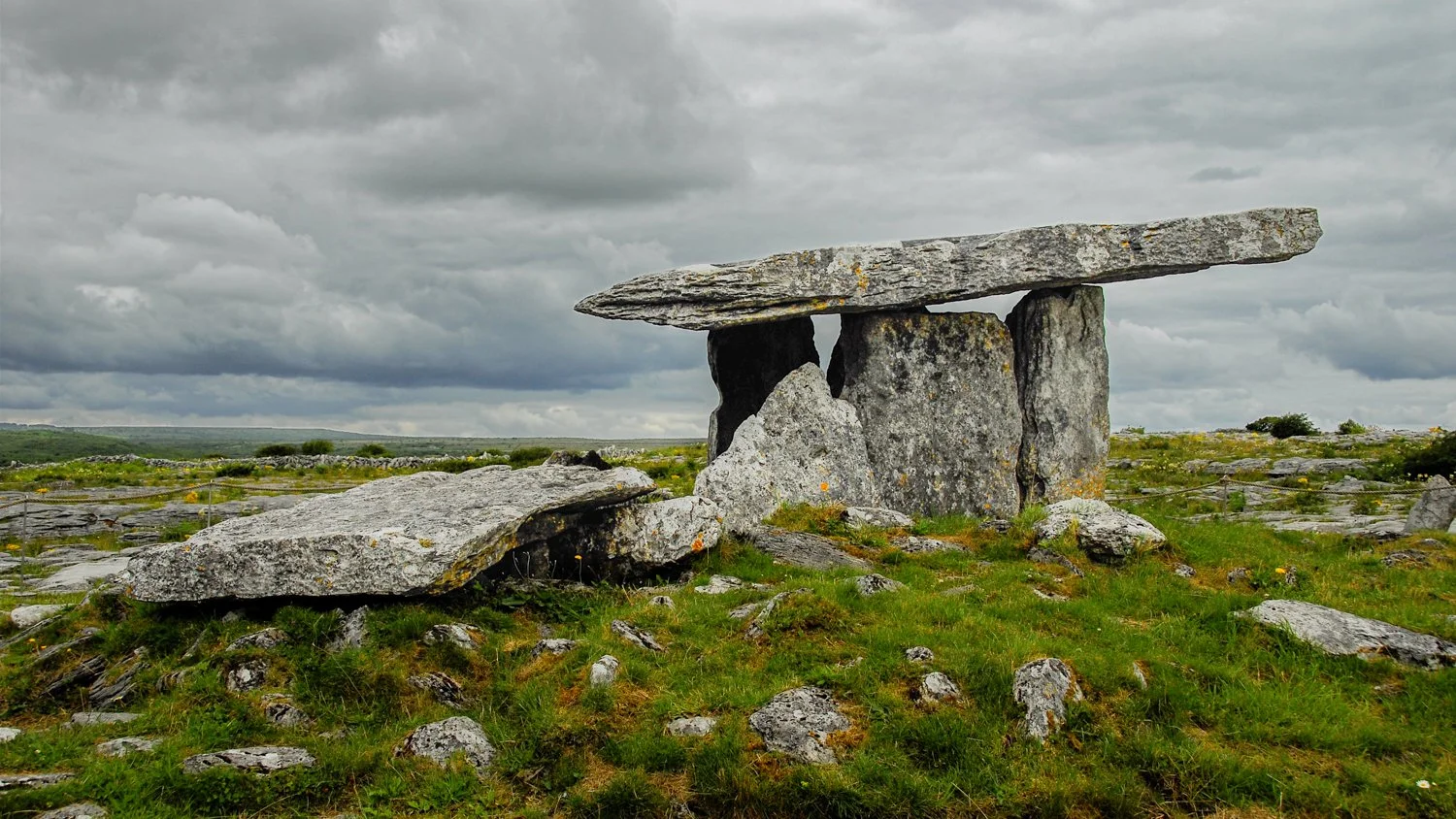
Poulnabrone Dolmen, a megalithic portal tomb from 3800-3200 BC in which the remains of 22 people and various artifacts were found in the 1980's, County Clare, Ireland

The Taj Mahal, a white marble mausoleum built (1632) for an emperor's wife, on the bank of the Yamuna River, Agra, India
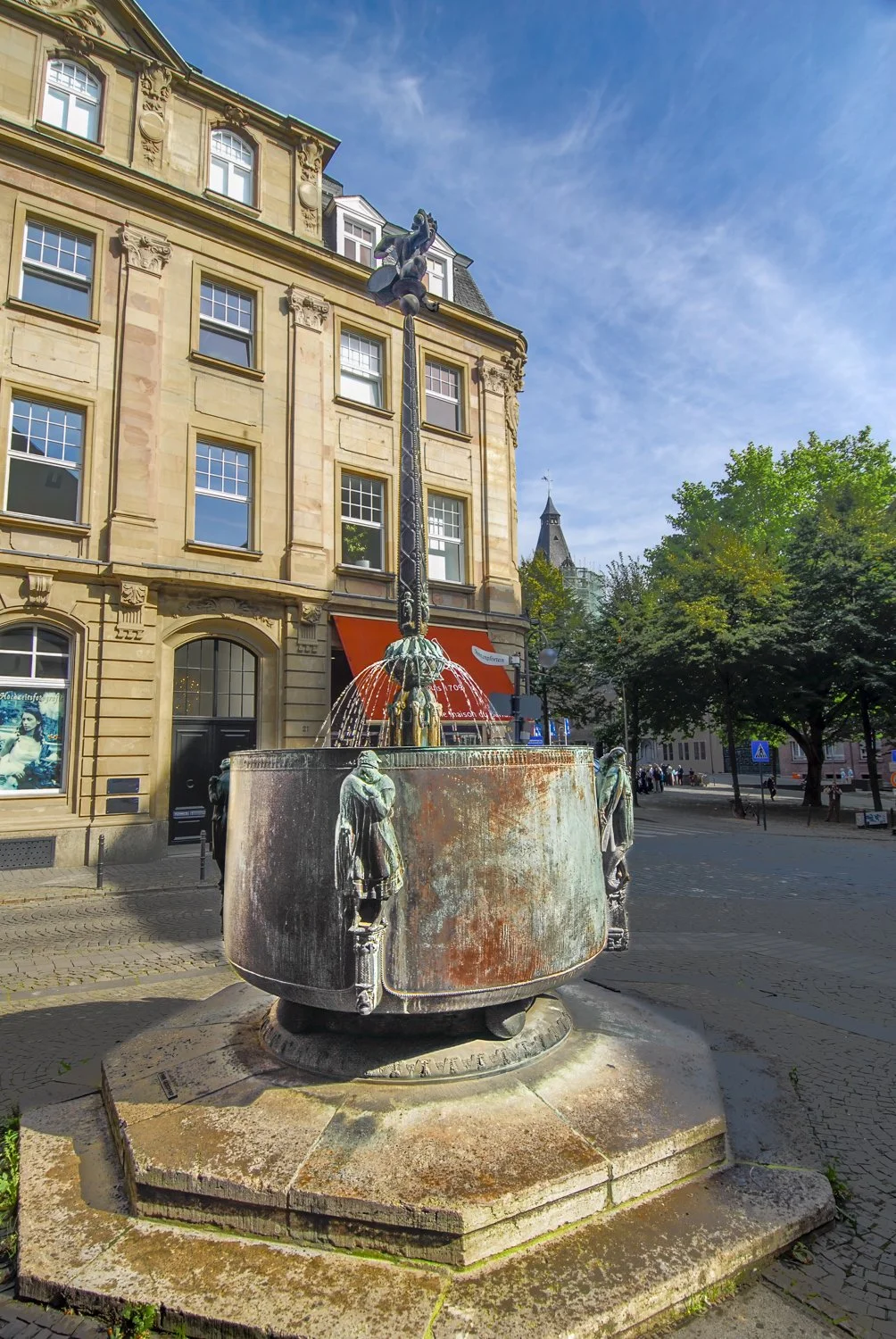
Fastnachtsbrunnen, a fountain built on the Am Hof square in 1913, has figures and symbols associated with the famous annual Cologne Carnival, which began in the early 19th century, in the "Old City" of Cologne, Germany (Cologne dates back to 38 BC and in the 1st century was a Roman colony)
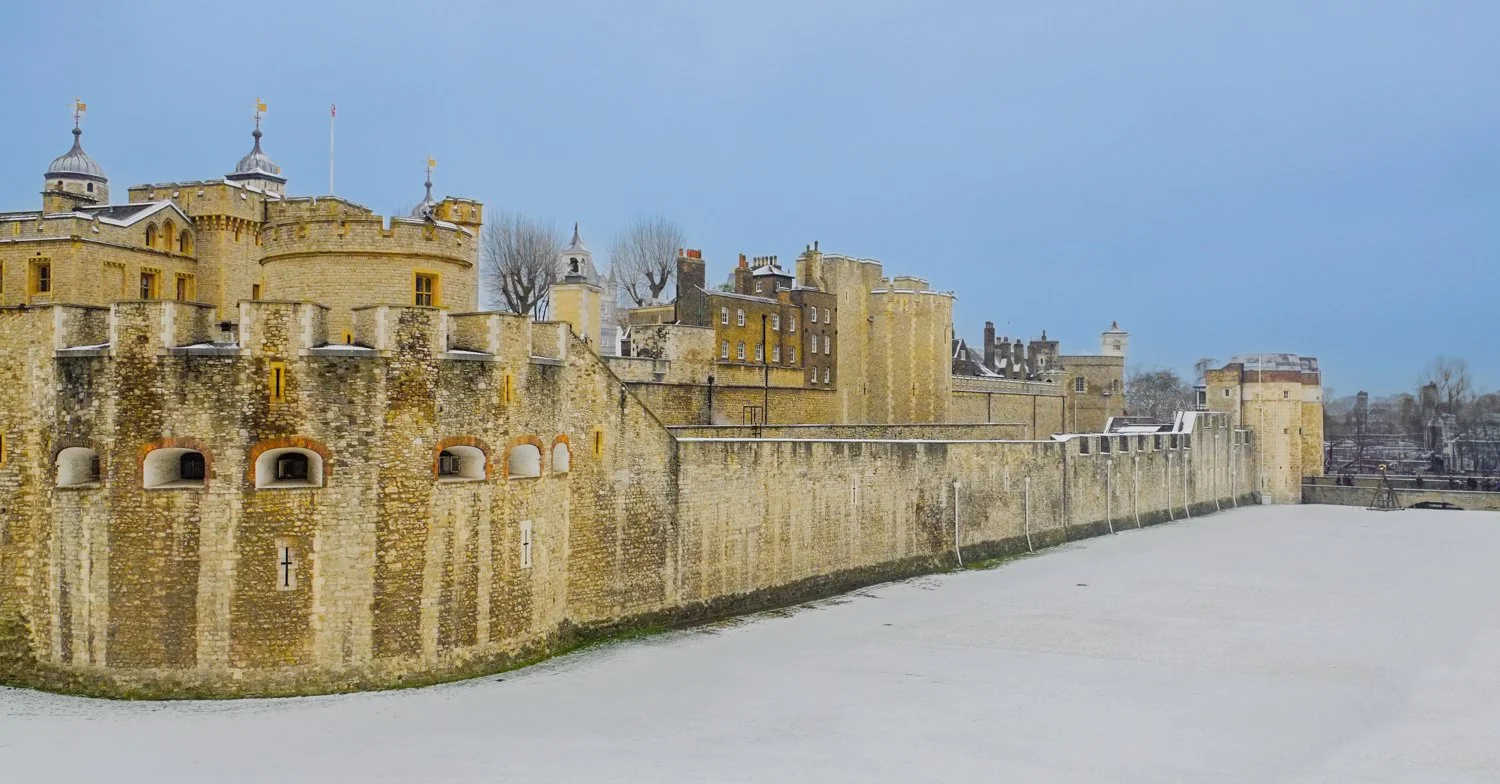
The Tower of London castle and moat covered in snow; the complex was constructed under WIlliam the Conqueror beginning after 1066; London, England

The Reask Standing Stone, from about 500-600; the original Celtic scrollwork was "Chistianized" with a cross carving on the Stone's upper face, as an early Christian monastic community developed, Dingle Peninsula, Ireland

An unusual capture of Stonehenge in the snow (snow is uncommon there and, when it occurs, Stonehenge closes to the public) taken just after sunrise, Salisbury Plain, England. Built in stages beginning around 3100 BC, with the large stones (up to 22 tons) added later (perhaps 1520 BC), different theories exist about its purpose (e.g., religous or atronomical observation).
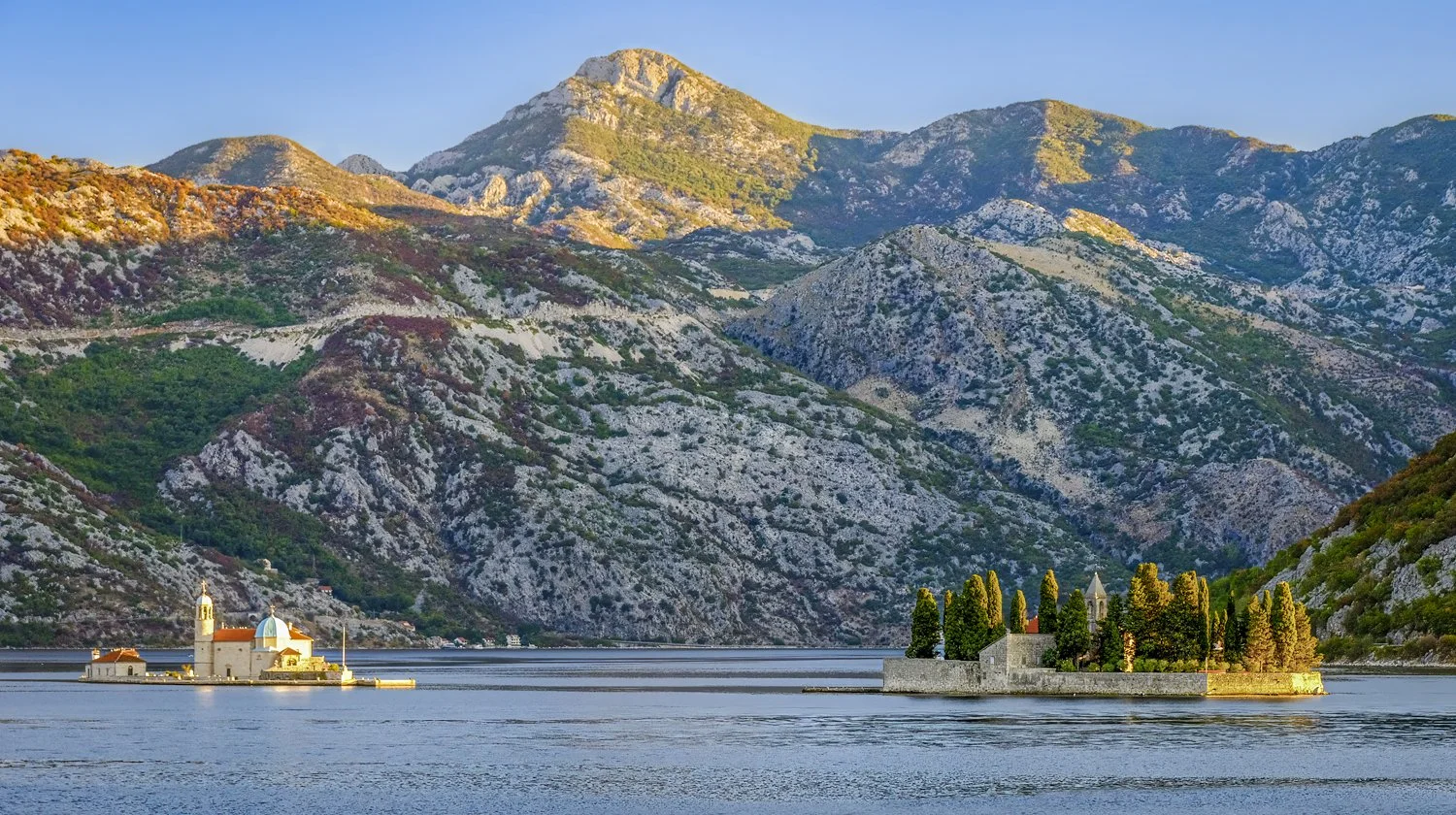
Bay of Kotor on the Adriatic Coast of Montenegro with Our Lady of the Rocks (island on left began to be created by sailors in 15th century and it has a 17th century church and museum) and, on right, Sveti Dorde island which holds the Saint George Benedictine mnastery constructed in 12th Century

The highest levels and painted ceiling of the interior of the dome of St. Paul's Cathedral (completed in 1710), as designed by Christopher Wren and built after the Great Fire of London of 1666 destroyed the prior cathedral; London, England

The Palace of Westminister (19th century), where the Houses of Parliament are, and toward the right, the Elizabeth Tower, the clock of which on the hour rings the bell called "Big Ben", London, England; image taken in early evening after a dusting of snow

Crillon Hortel (left, 18th century residence that became a hotel at begiing of 20th century), Hotel de La Marine (right, 18th century structure for royalty and then the French navy, stands by where Louis XVI and Marie Antoinette went to the guillotine), Place de La Concorde with Luxor obelisk and fountains (center, obelisk crafted around 1300 BC during reign of Pharaoh Ramesses II) and Eglise de la Madeline (church constructed beginning in 18th century and finished in 1842) in background, Paris, France
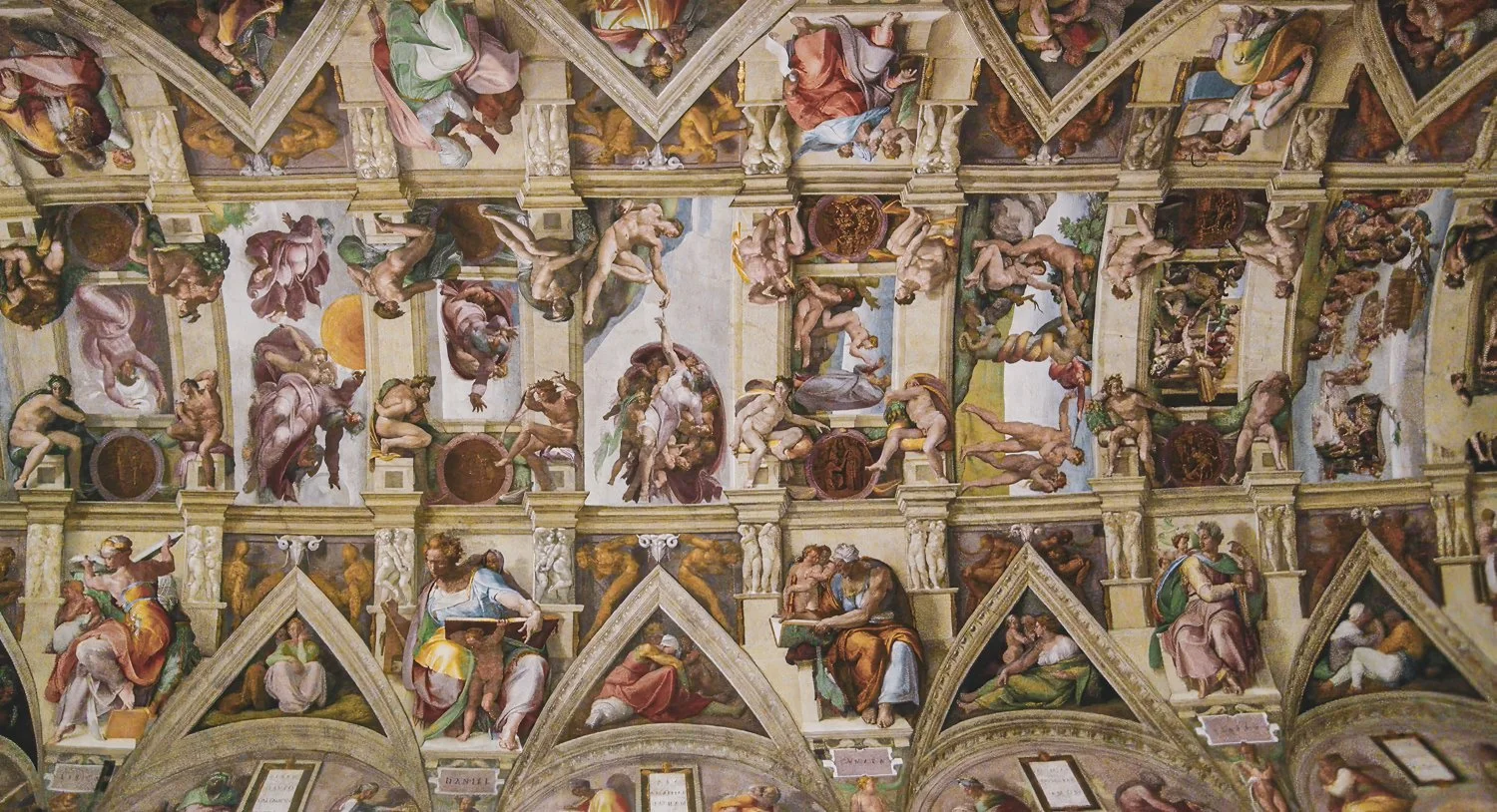
Michelangelo's Sistine Chapel ceiling fresco, painted between 1508 and 1512, of scenes from the Old Testament, including in the center Adam and God reaching out to each other, Vatican Museums in Rome; image taken after the restoration completed in 1994
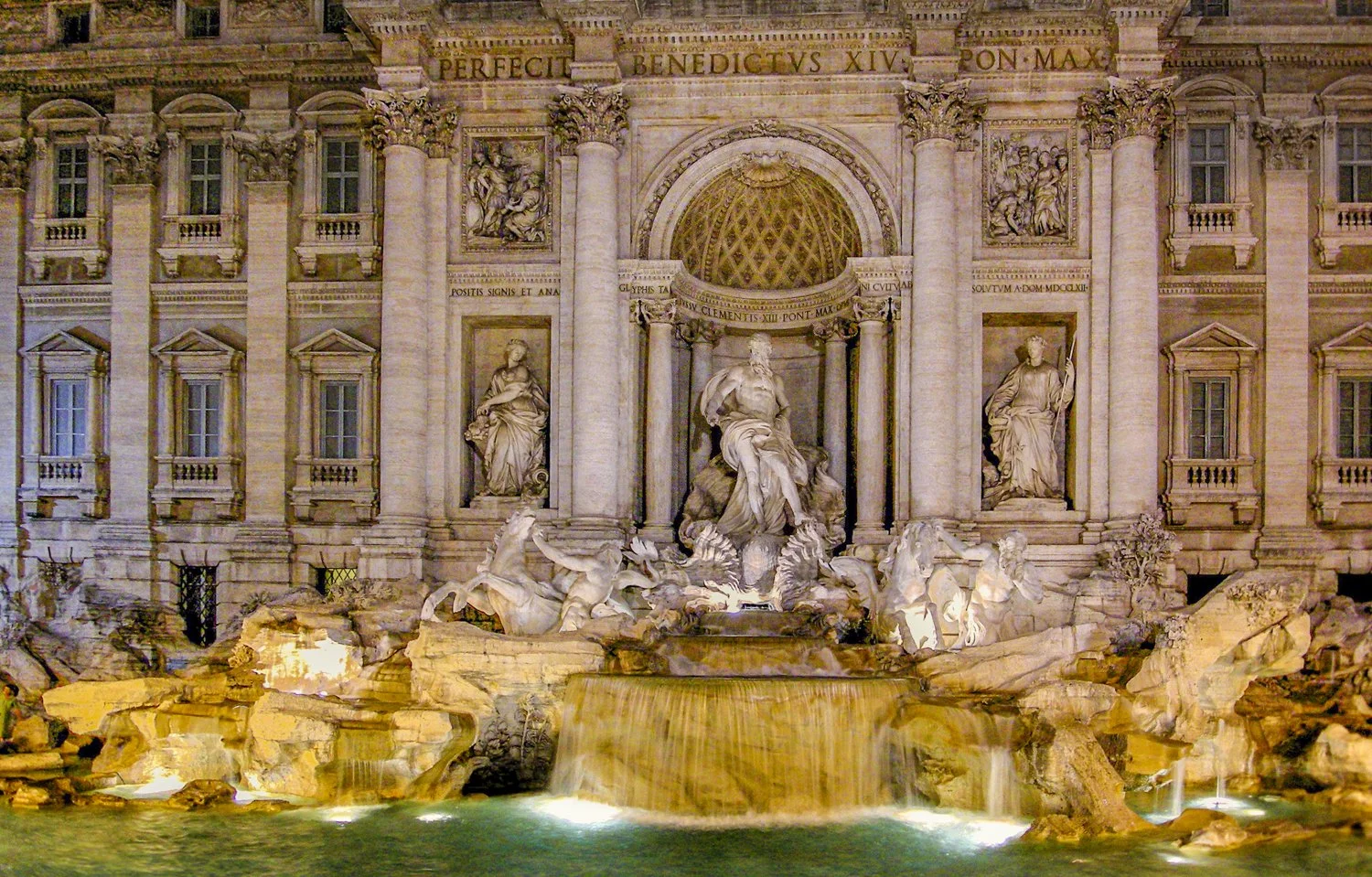
The Trevi Fountain, built in 1762 depicts in the center Oceanus, god of all waters; it is at the end of a 19 BC Roman aquaduct that still supplies water to the fountain and other sites, Rome, Italy

"Seven Bridges Viewpoint", seven arched bridges can be seen in a perfect line from where the Reguliersgracht canal crosses the Herengracht canal (17th century), Amsterdam, the Netherlands

Le Chateux Frontenac at night; a UNESCO World Heritage site; the original part of hotel was built by Canadian Pacific Railroad Company in 1893; with over 600 rooms it overlooks the Sant Lawrence River from Old Quebec City, Canada
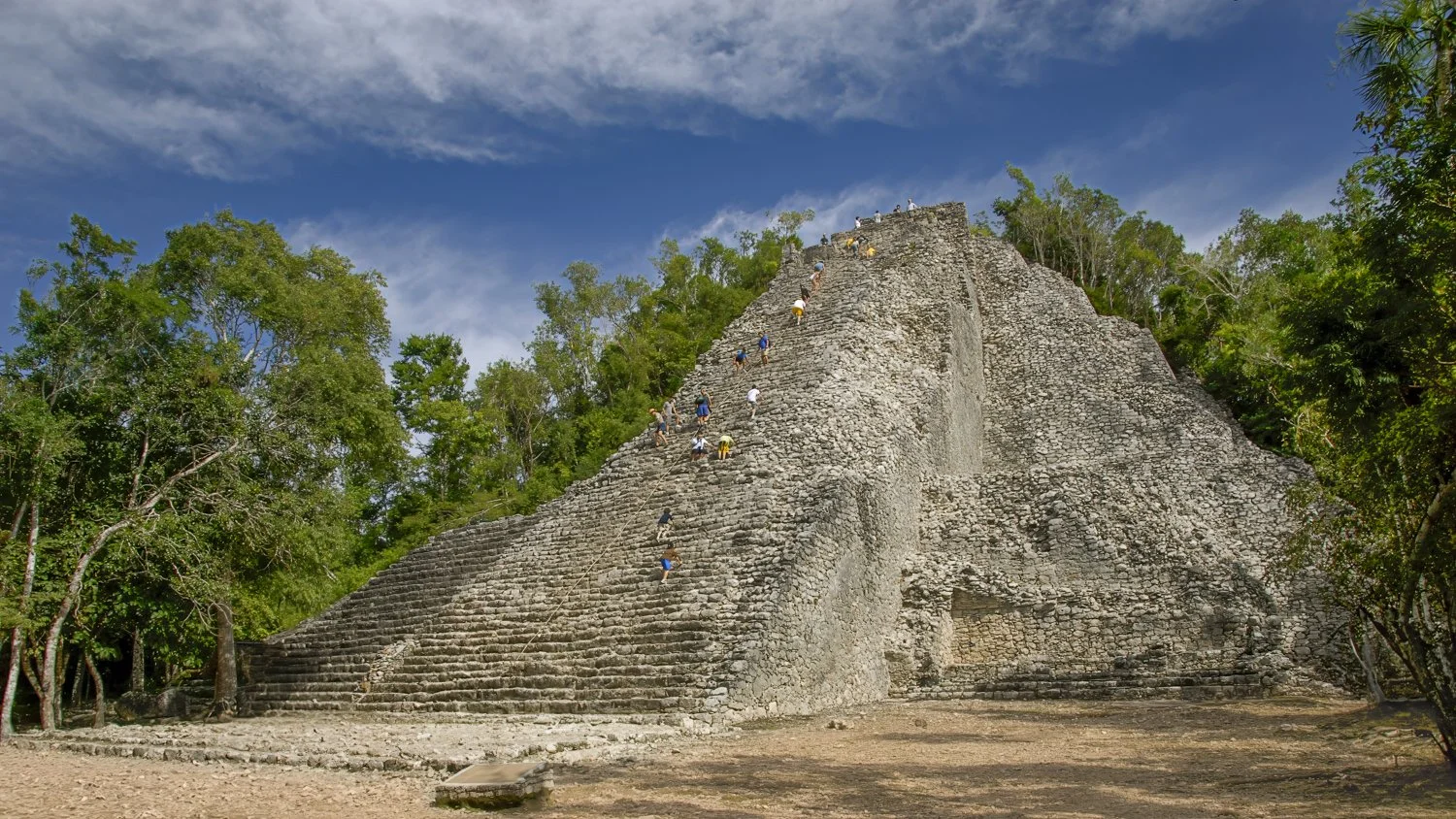
Nohoch Mui Pyramid in Mayan city of Coba (city's peak period was 500- 900) in Yucatan Peninsula, Mexico; pyramid was used for atronomical observations, religious ceremonies, etc. As of 2020, climbing the pyramid, which is as tall as a 12 story building, is no longer allowed
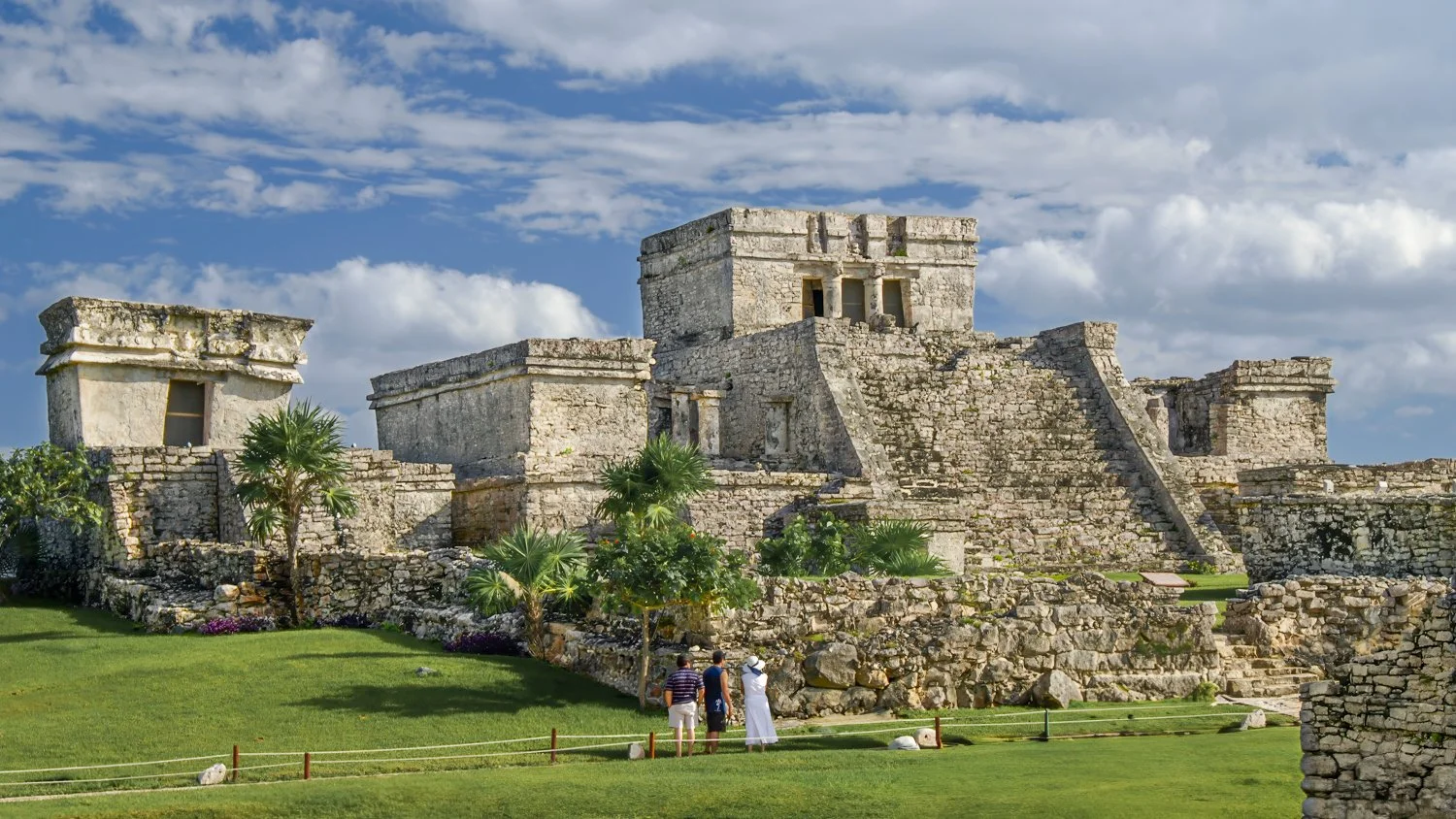
Ruins, including El Castillo (structure was possibly used as a watchtower or lighthouse) of Tulum, a walled city on a cliff overlooking Caribbean; Tulum was a major trading hub during peak (13th-15th centuries) of Mayan civilization; Mexico
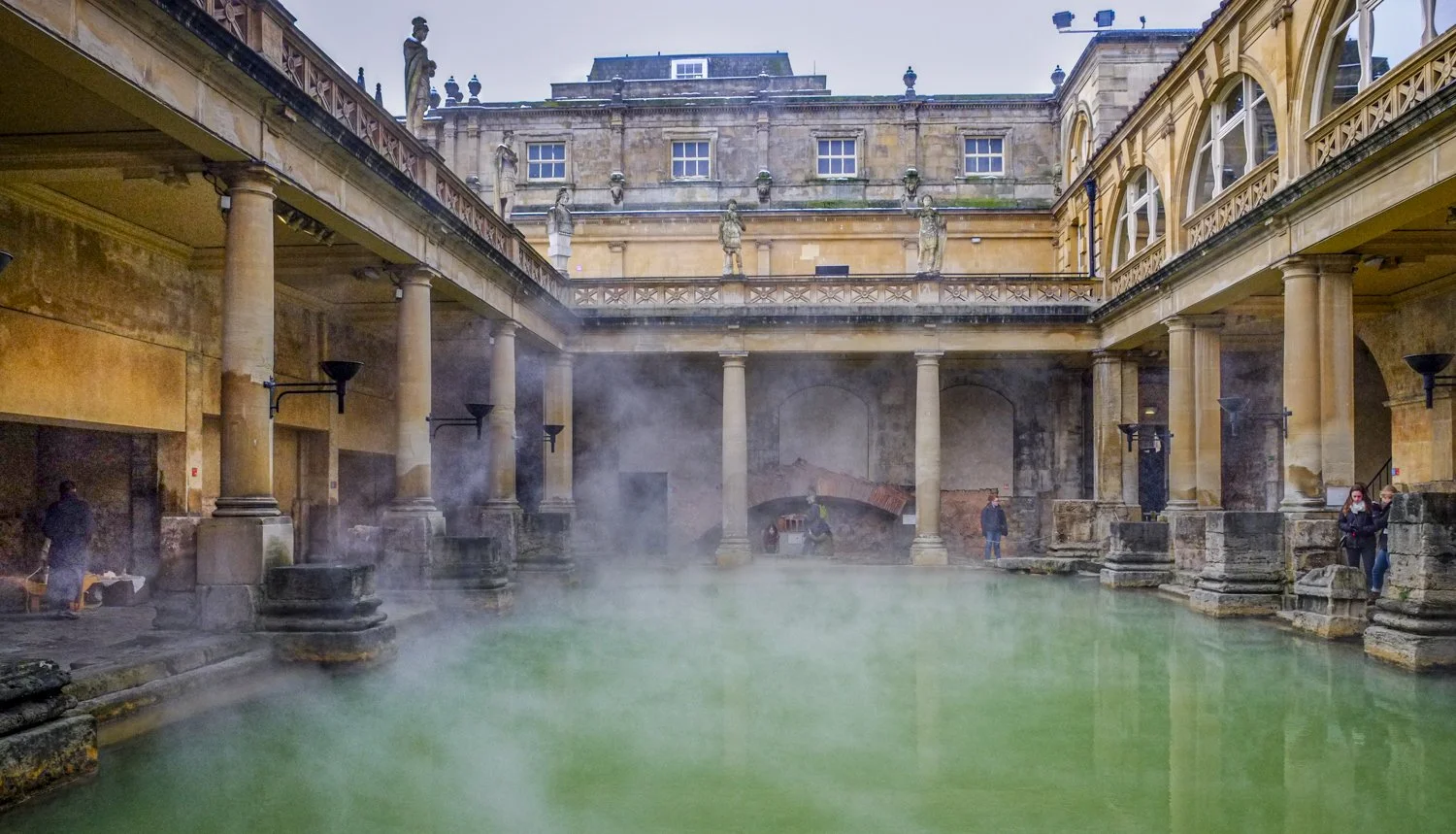
The Great Bath in the image's center was, in Roman times, a communal place used for exercise and socializing; it and other parts of the Baths complex were built (60-300) around a scared spring in the city of Bath, England
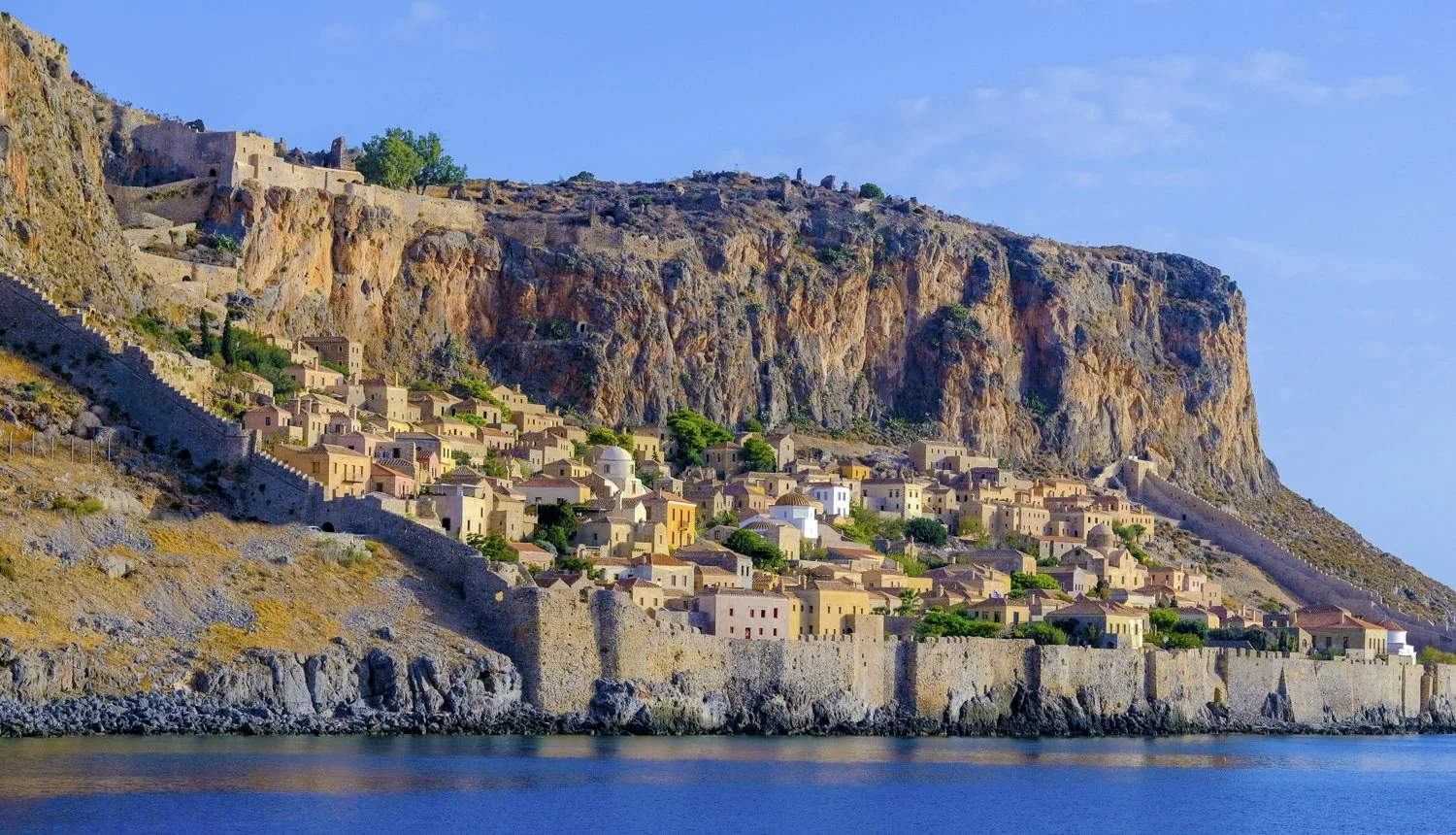
Fortified town of Monemvasia, founded in 6th century, is on a small island off the Peloponnese penisnula in Greece; it is one of oldest continuously occupied fortified towns in Europe and the area around it has been inhabited since prehistoric times
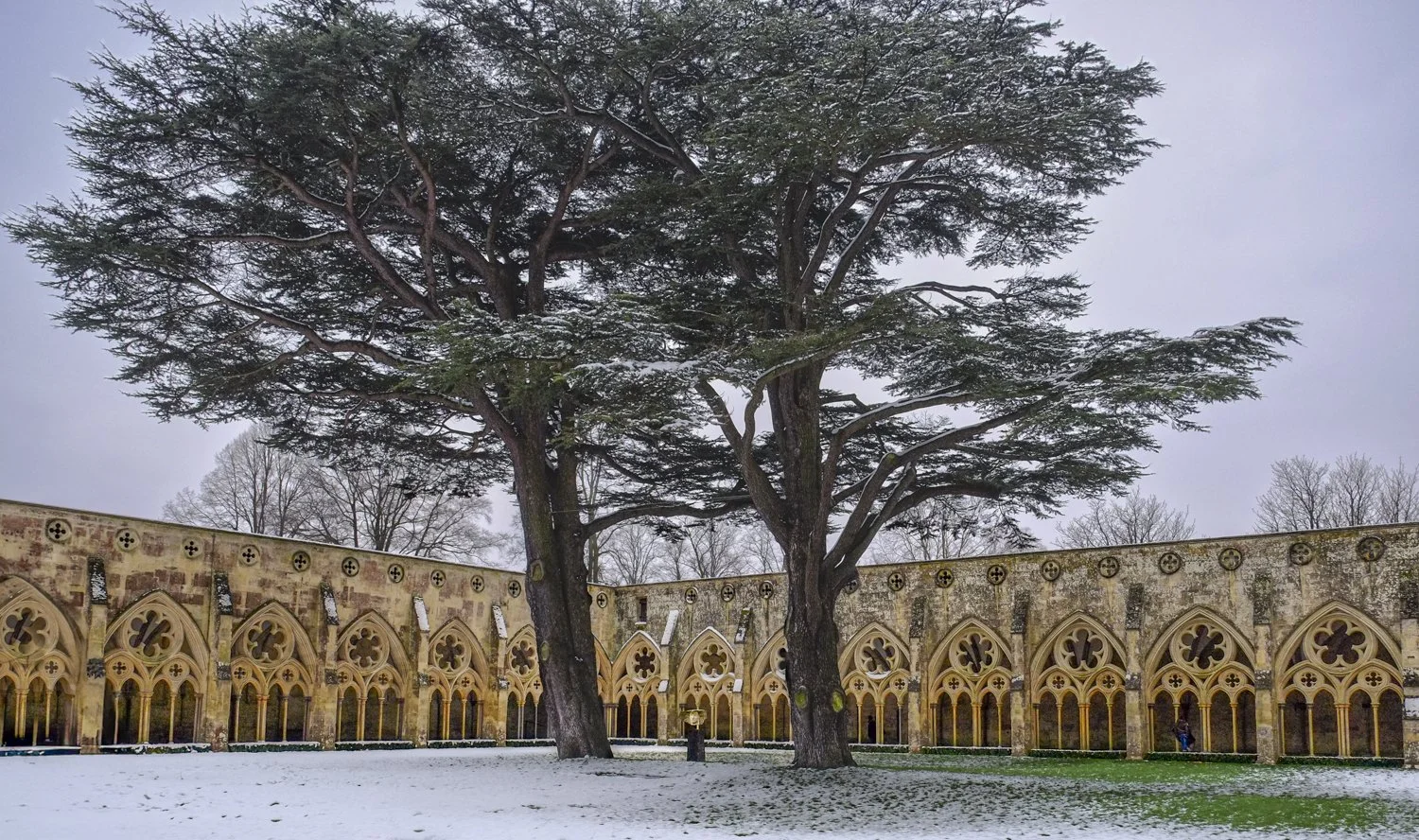
Carved stone interior walls of the 13th century Cloisters of Salisbury Cathedral, Salisbury, England; the two cedar trees were planted in 1837
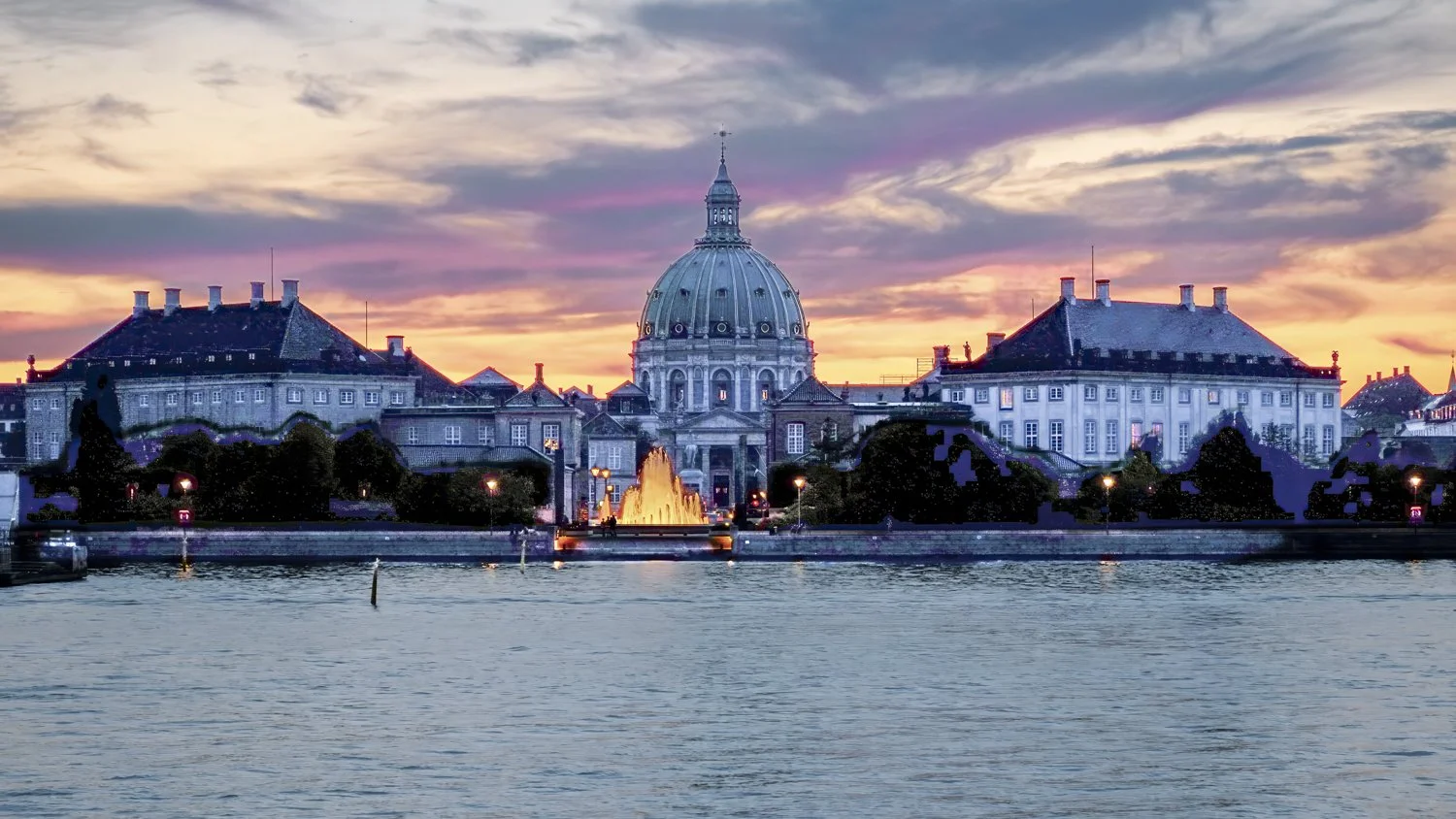
Amalienborg Palace complex (four palaces for the Danish royal family), originally built for other nobles in mid-1700's and then taken over by royal family in 1794, with Frederick's Church in background behind fountain, Copenhagen, Denmark; taken at sunset from across the inner harbor
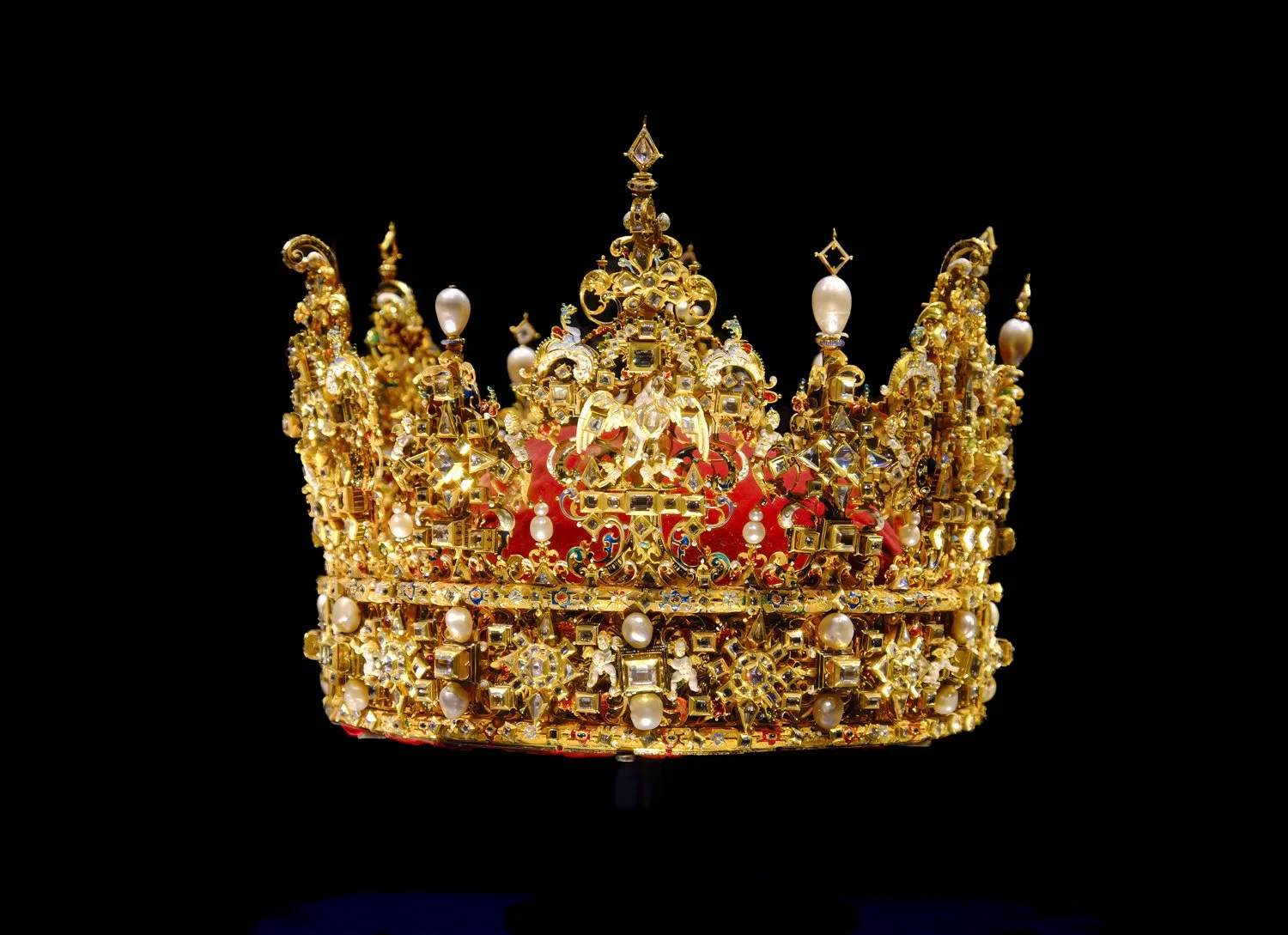
Coronation Crown of King Christian of Denmark (1596), on display in Royal Treasury in Rosenborg Castle,Copenhagen, Denmark
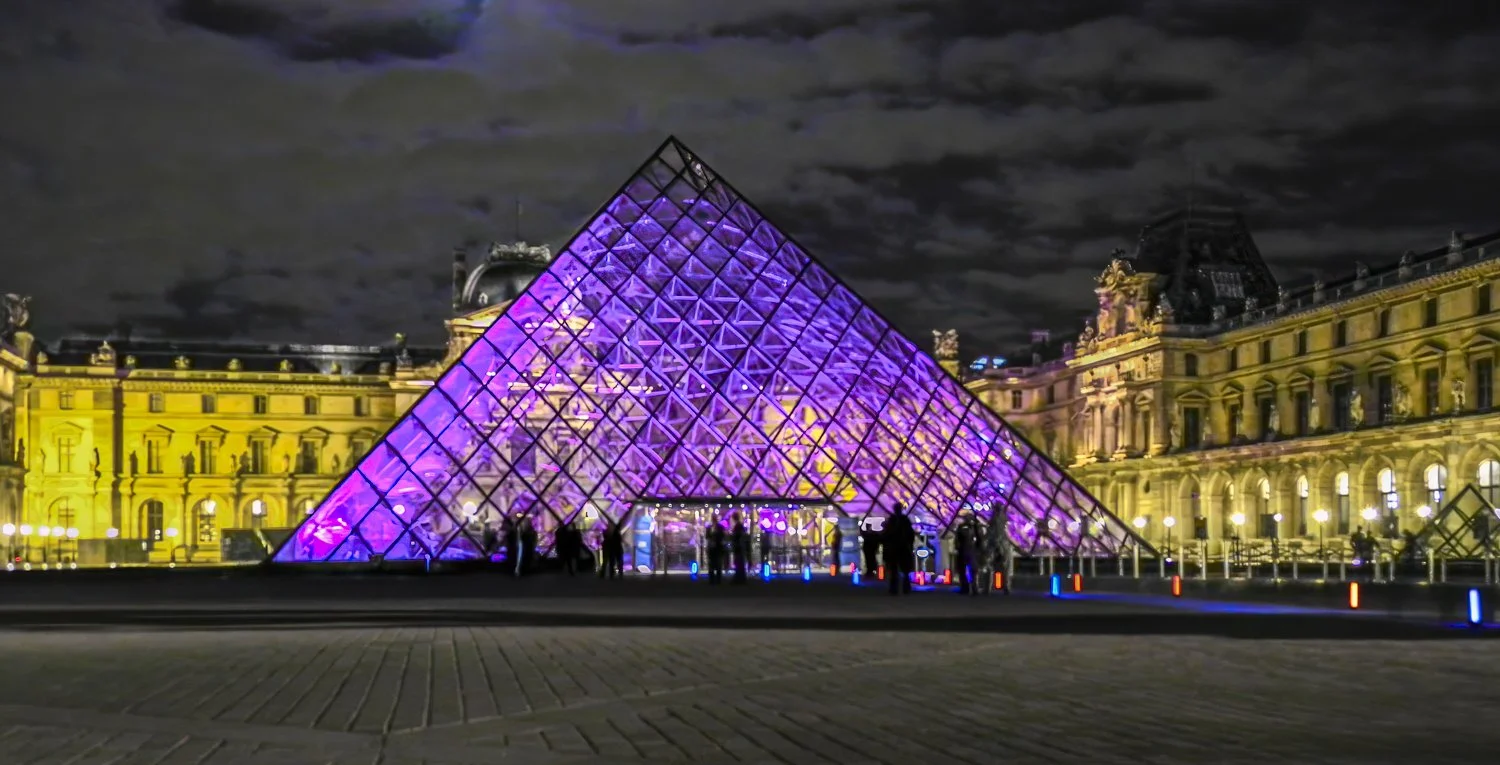
Pyramide du Louvre, designed by architect I. M. Pei, became in 1989 the main entrance to the Louvre, the origins of which go back to a 12th century palace; Paris, France

The timber bridge ("Chapel Bridge"), originally built in 1333 and reconstructed after 1993 fire, and water tower (erected 1290-1300) in Lucerne, Switzerland. The Bridge was at first a defensive fortification linking the then Old and New parts of Lucern.
